Oxalis plants are a fascinating group of flowering perennials known for their clover-like leaves and vibrant blooms. With over 500 species worldwide, they come in a variety of colors, shapes, and sizes. Here are 50 types of oxalis plants that can add charm to any garden.
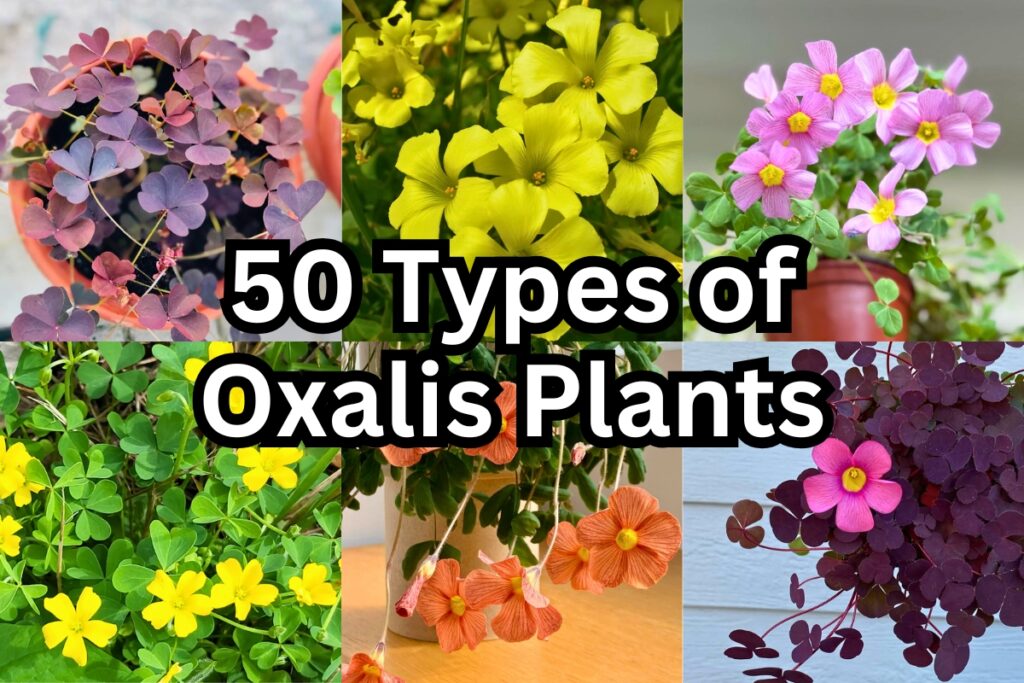
Contents
- 1 Oxalis Varieties
- 1.1 Oxalis triangularis
- 1.2 Oxalis corniculata
- 1.3 Oxalis stricta
- 1.4 Oxalis deppei
- 1.5 Oxalis versicolor
- 1.6 Oxalis tuberosa
- 1.7 Oxalis acetosella
- 1.8 Oxalis latifolia
- 1.9 Oxalis violacea
- 1.10 Oxalis pes-caprae
- 1.11 Oxalis enneaphylla
- 1.12 Oxalis corymbosa
- 1.13 Oxalis corymbosa ‘Variegata’
- 1.14 Oxalis corymbosa ‘Aureo-reticulata’
- 1.15 Oxalis lasiandra
- 1.16 Oxalis incarnata
- 1.17 Oxalis articulata
- 1.18 Oxalis rubra
- 1.19 Oxalis flava
- 1.20 Oxalis hirta
- 1.21 Oxalis purpurea
- 1.22 Oxalis melanosticta
- 1.23 Oxalis bowiei
- 1.24 Oxalis convexula
- 1.25 Oxalis palmifrons
- 1.26 Oxalis adenophylla
- 1.27 Oxalis magnifica
- 1.28 Oxalis perennans
- 1.29 Oxalis trilliifolia
- 1.30 Oxalis valdiviensis
- 1.31 Oxalis virginea
- 1.32 Oxalis inaequalis
- 1.33 Oxalis luteola
- 1.34 Oxalis luteola ‘Maculata’
- 1.35 Oxalis luteola ‘Glauca’
- 1.36 Oxalis obtusa
- 1.37 Oxalis obtusa ‘Blush’
- 1.38 Oxalis obtusa ‘Ceres Salmon’
- 1.39 Oxalis obtusa ‘Lilac’
- 1.40 Oxalis albicans
- 1.41 Oxalis ambigua
- 1.42 Oxalis barrelieri
- 1.43 Oxalis brasiliensis
- 1.44 Oxalis caprina
- 1.45 Oxalis debilis
- 1.46 Oxalis decaphylla
- 1.47 Oxalis dehradunensis
- 1.48 Oxalis depressa
- 1.49 Oxalis dillenii
- 1.50 Oxalis drummondii
- 2 Easy Care Guide for Oxalis Plants
Oxalis Varieties
Oxalis triangularis
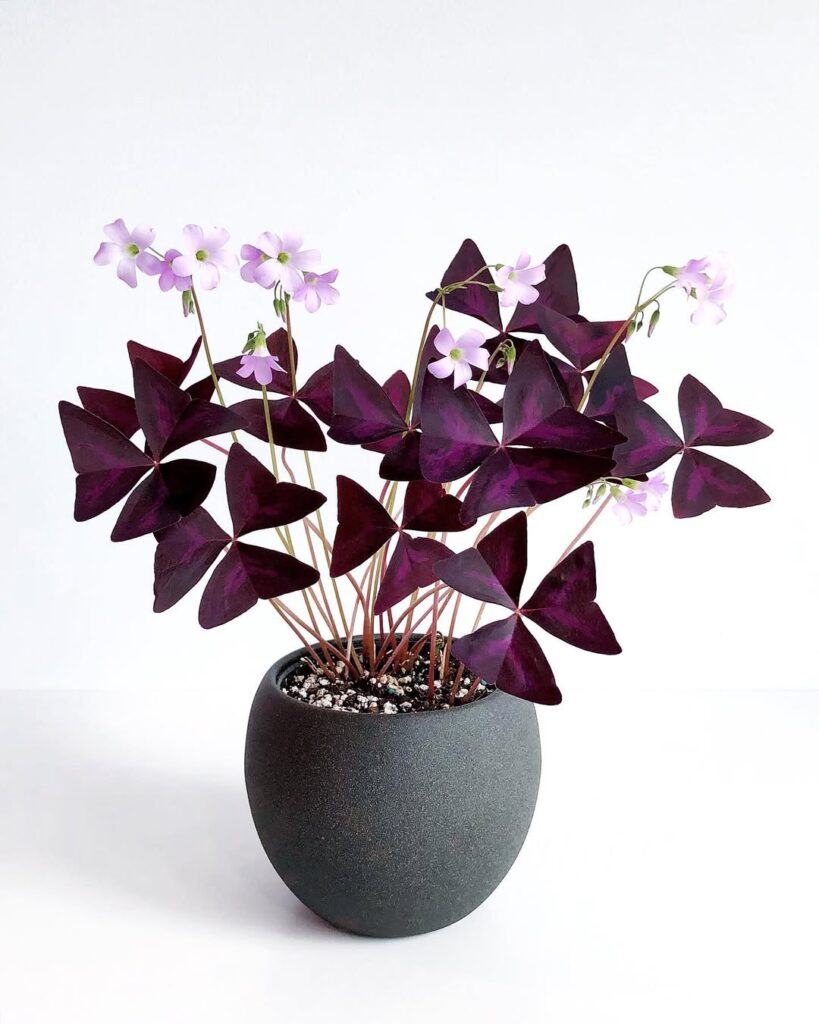
This stunning variety features deep purple, triangular leaves that fold up at night. It produces delicate pink or white flowers and thrives in bright, indirect light.
Oxalis corniculata
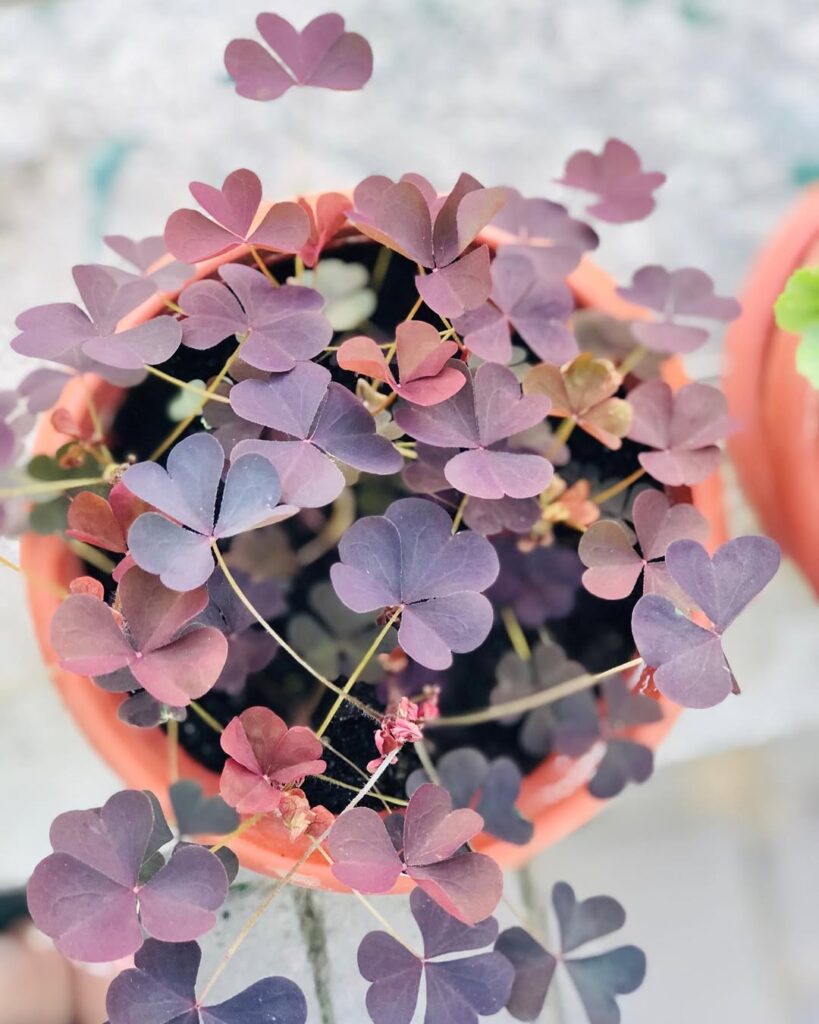
A creeping species with small yellow flowers and green or reddish leaves. Often considered a weed, but its ability to spread makes it a great ground cover.
Oxalis stricta
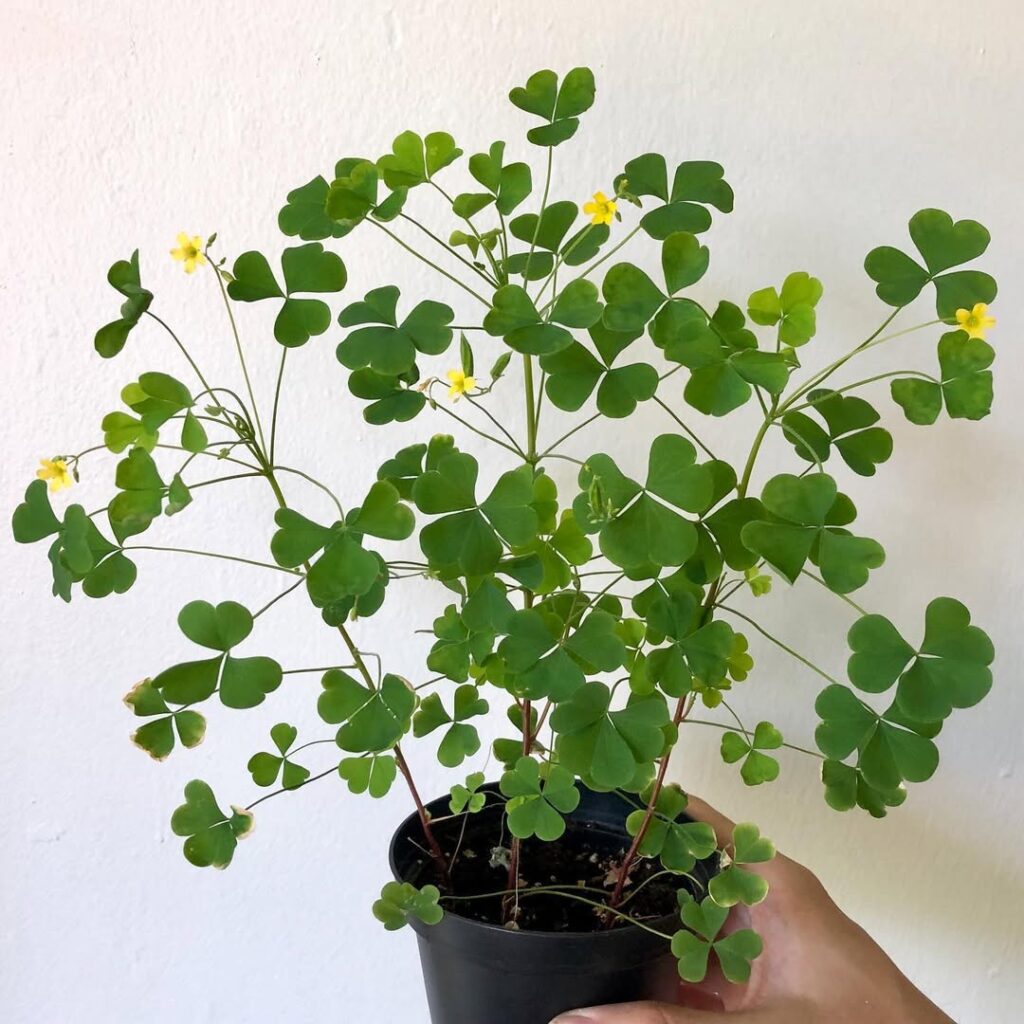
Commonly known as yellow wood sorrel, this variety has bright yellow flowers and green leaves. It’s edible and has a tangy, lemon-like taste.
Oxalis deppei
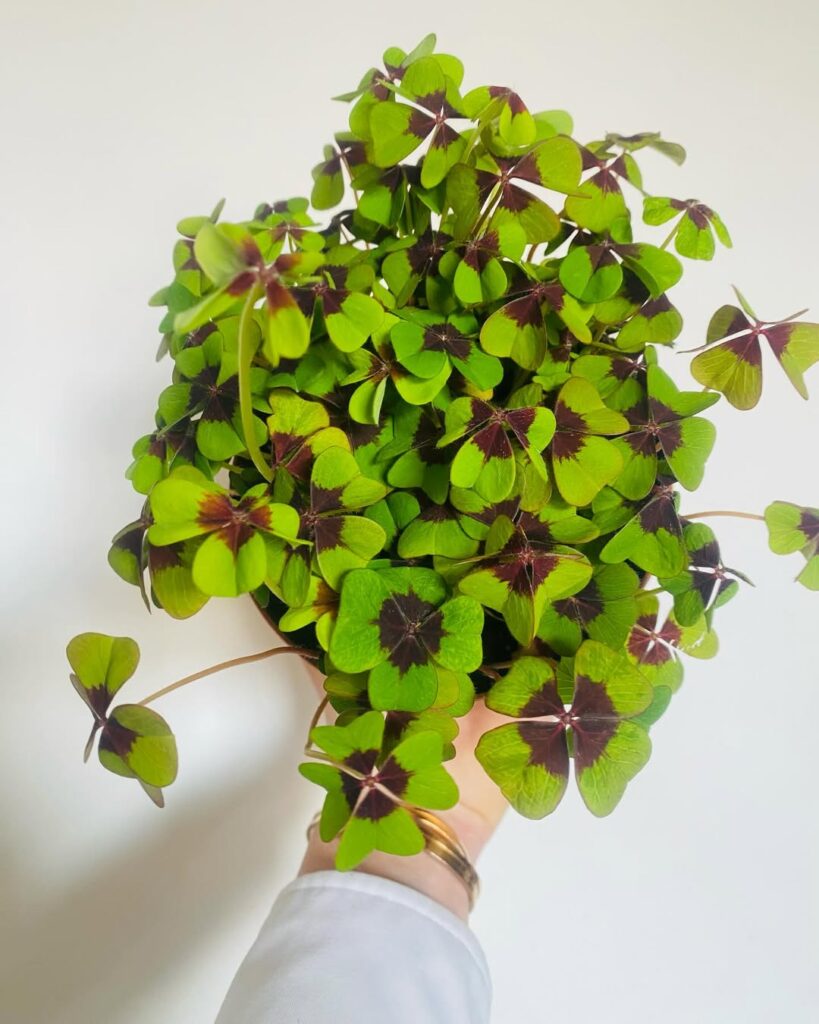
Also called the Iron Cross plant, it has four-lobed green leaves with a dark purple center. It blooms with pink flowers and is often associated with good luck.
Oxalis versicolor
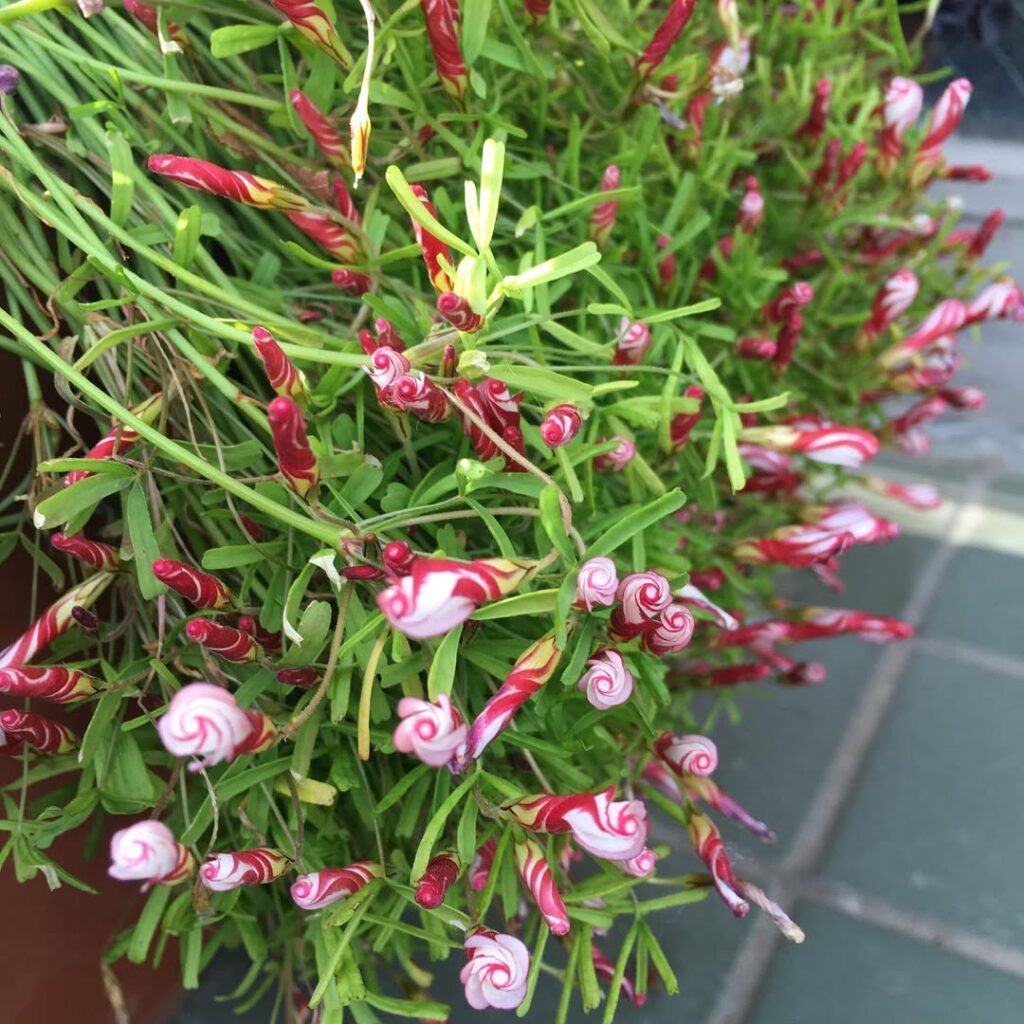
Known as the Candy Cane Sorrel, this variety has red-and-white striped flowers. It’s a winter bloomer and adds a festive touch to gardens.
Oxalis tuberosa

This species is grown for its edible tubers, known as oca. The leaves resemble clover, and the plant produces yellow flowers.
Oxalis acetosella
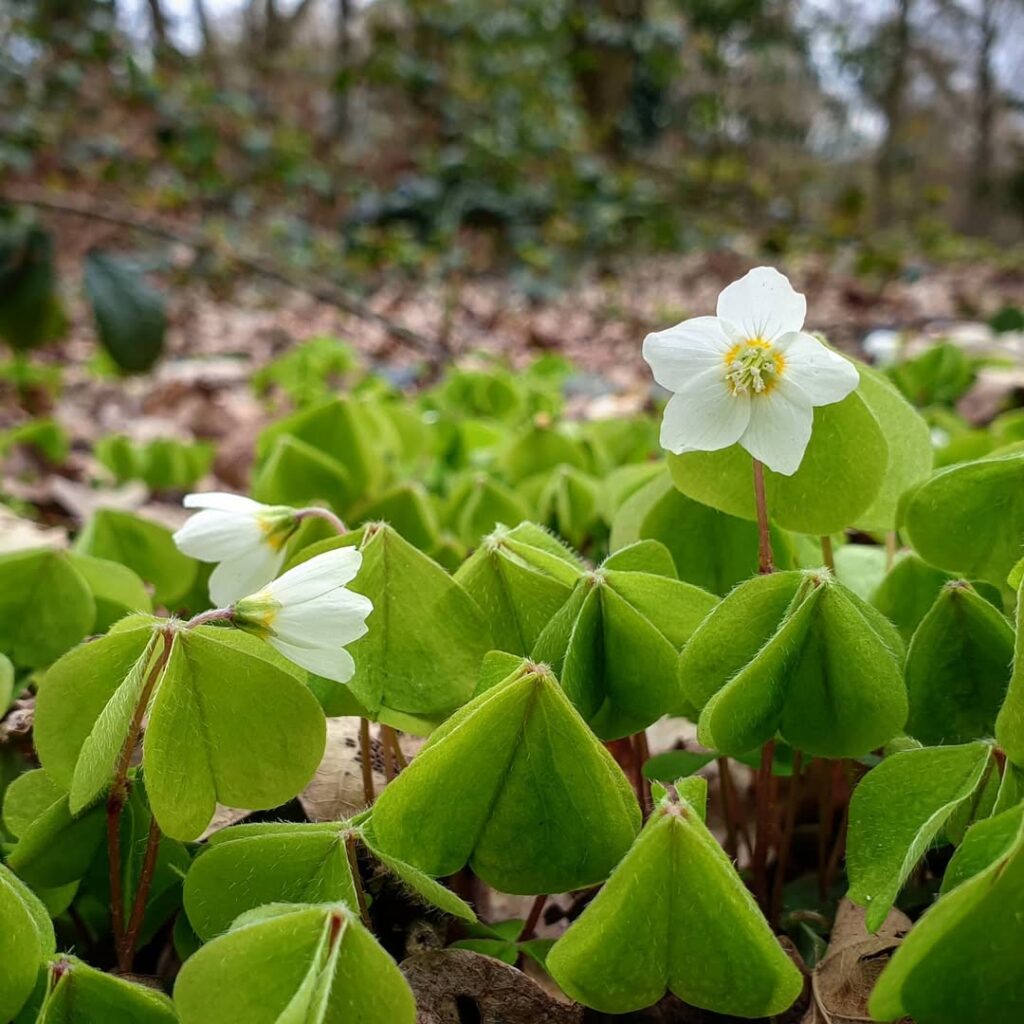
A delicate woodland species with pale pink or white flowers. Its leaves fold up at night, and it thrives in shaded areas.
Oxalis latifolia
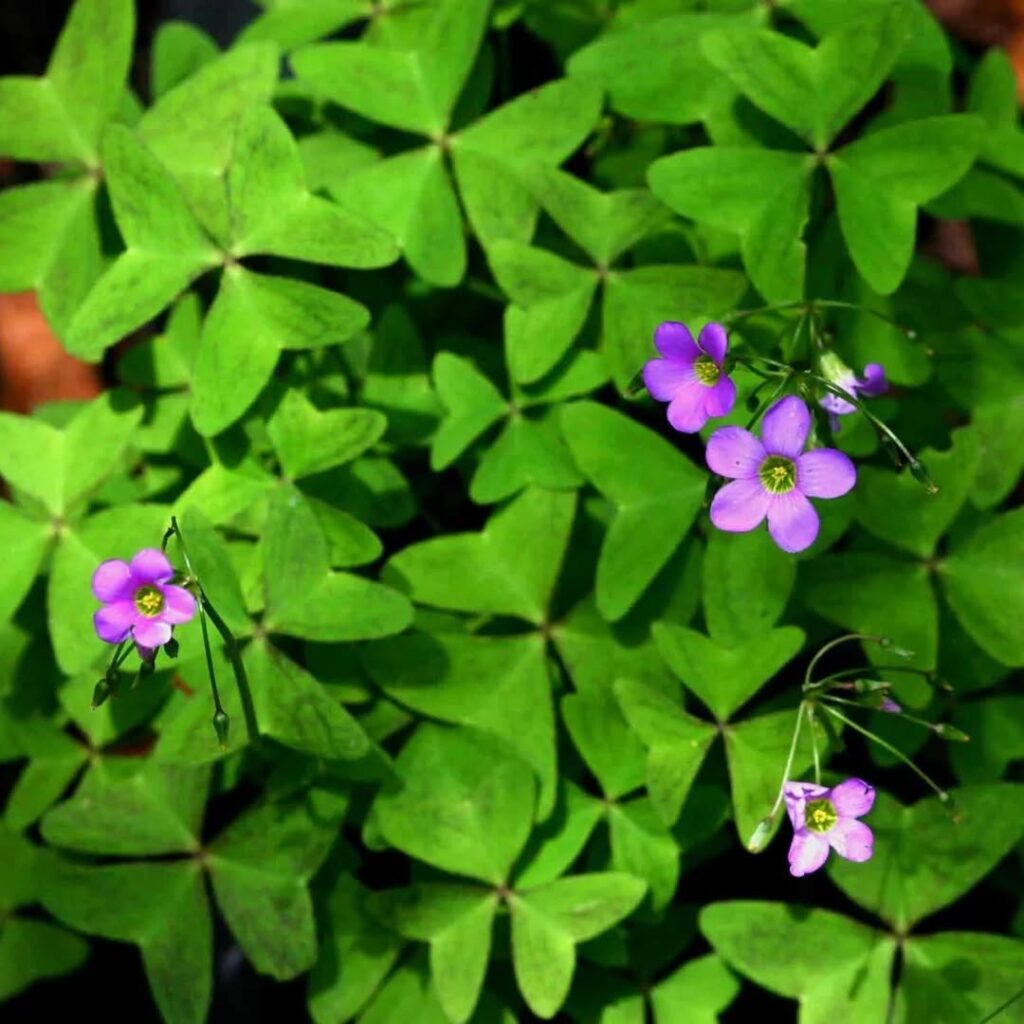
A broad-leaved variety with bright pink flowers. It spreads easily and is often used as a decorative ground cover.
Oxalis violacea
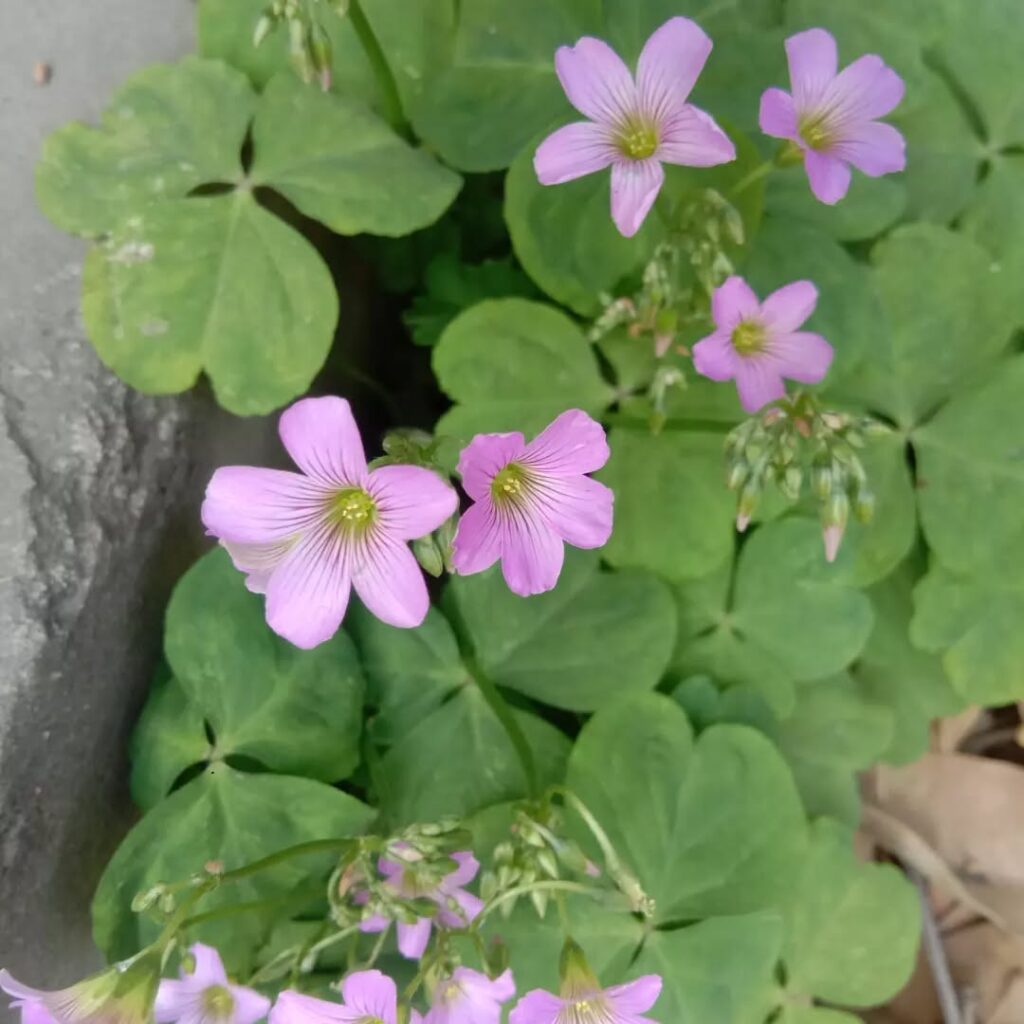
This variety has striking violet flowers and green leaves. It’s drought-tolerant and thrives in well-draining soil.
Oxalis pes-caprae
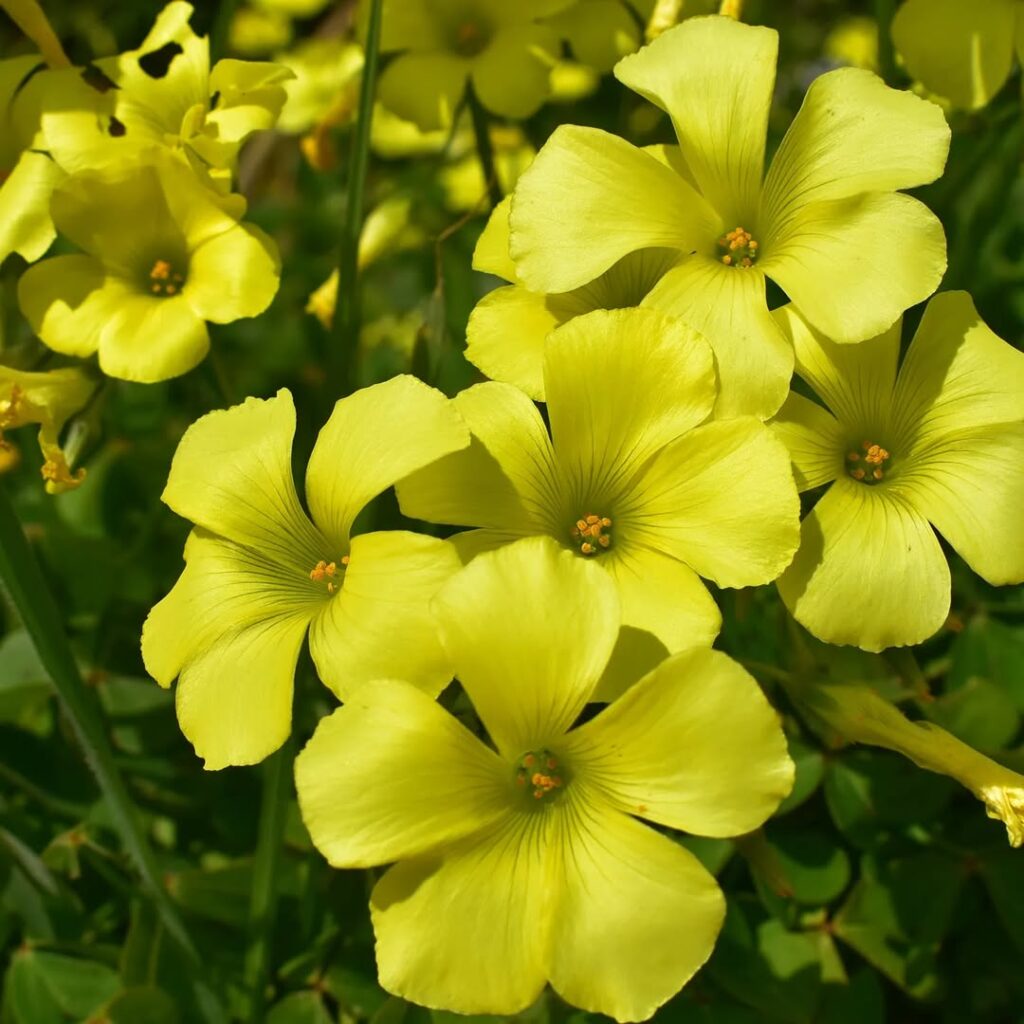
Also called Bermuda buttercup, it has bright yellow flowers and green leaves. It’s a vigorous grower and can become invasive.
Oxalis enneaphylla

A compact species with silvery-green leaves and pale pink flowers. It’s native to South America and prefers cool climates.
Oxalis corymbosa
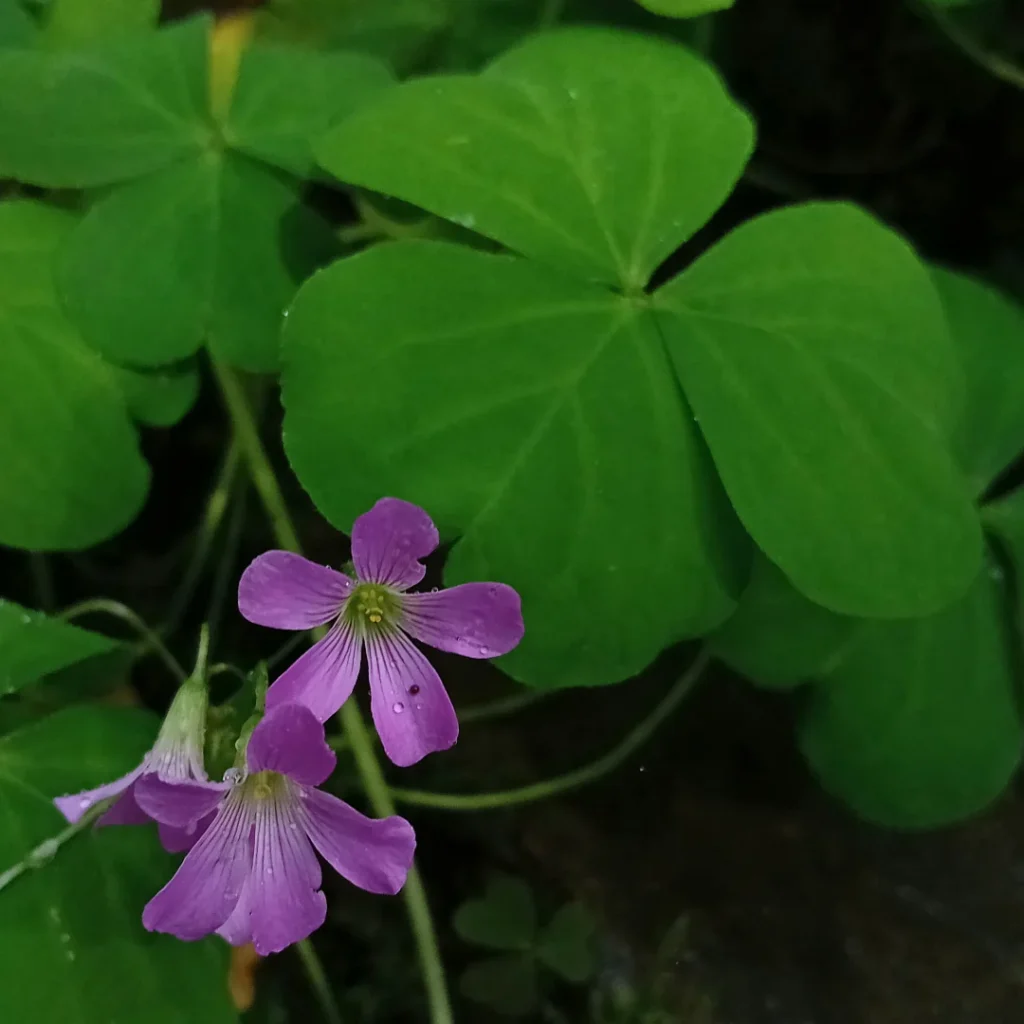
A fast-growing variety with magenta flowers and green leaves. It’s commonly used in ornamental gardens.
Oxalis corymbosa ‘Variegata’
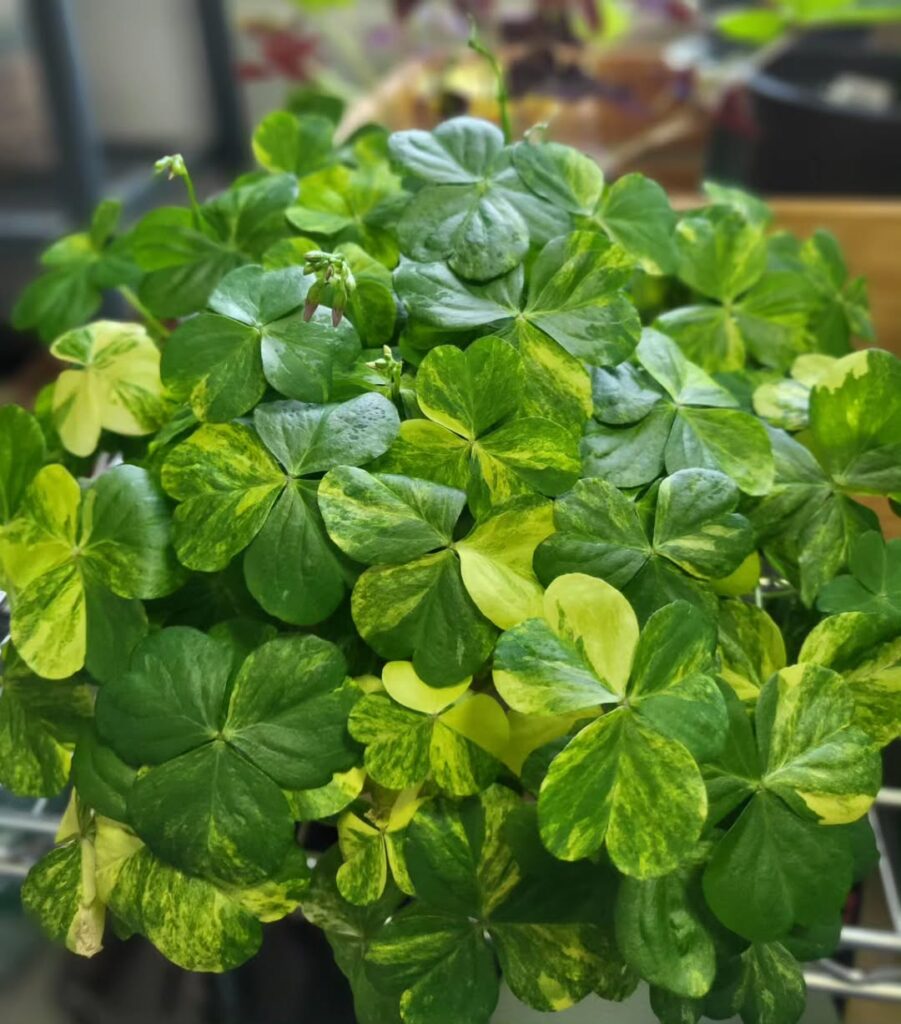
Oxalis corymbosa variegata features green leaves with creamy white or yellow variegation, creating a striking contrast, and produces delicate pink flowers. Its dynamic foliage follows the sun during the day and closes at night, adding an elegant touch to any garden.
Oxalis corymbosa ‘Aureo-reticulata’
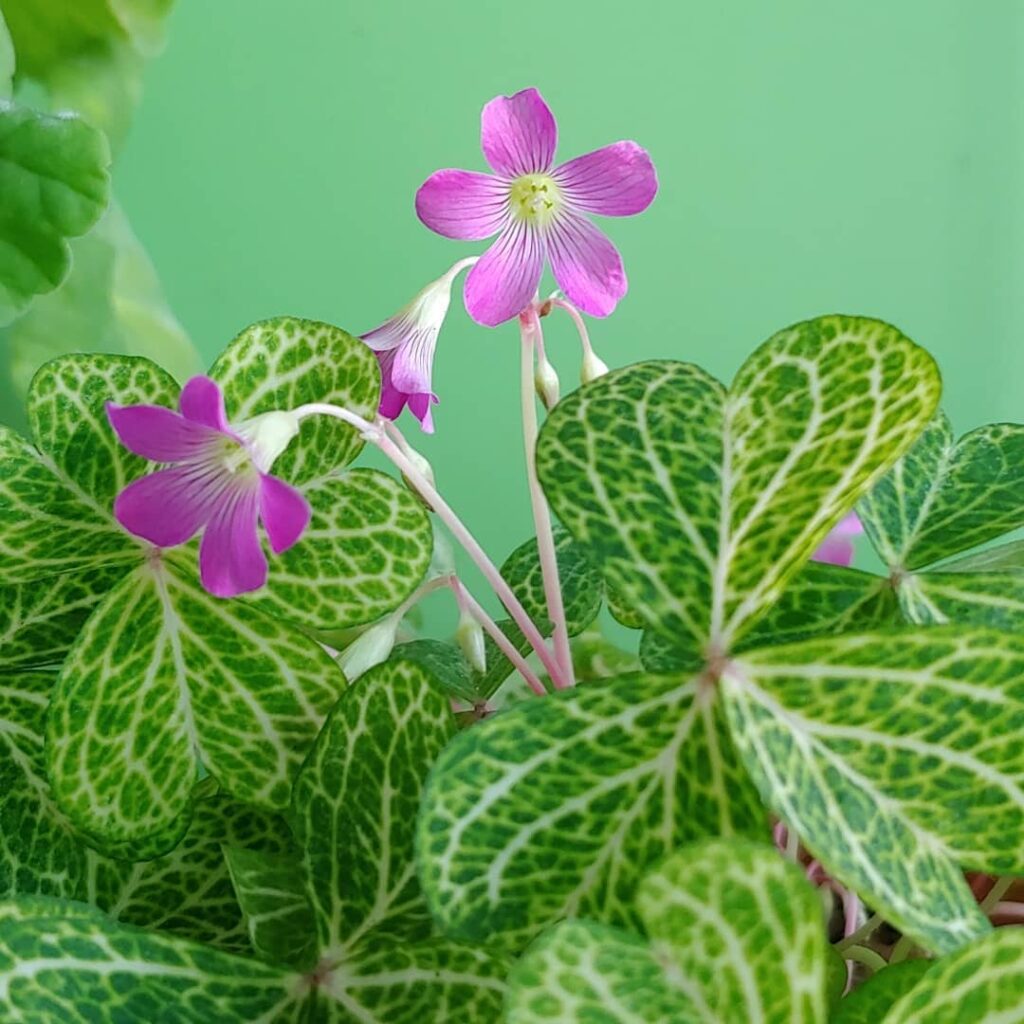
Also known as the Gold Veined Shamrock, this variety features striking green leaves adorned with intricate golden veins, creating a mesmerizing pattern. It produces delicate pink flowers that rise above the foliage, adding a soft contrast to its vibrant leaves. This plant tends to go dormant in hot summers but returns when temperatures cool down.
Oxalis lasiandra
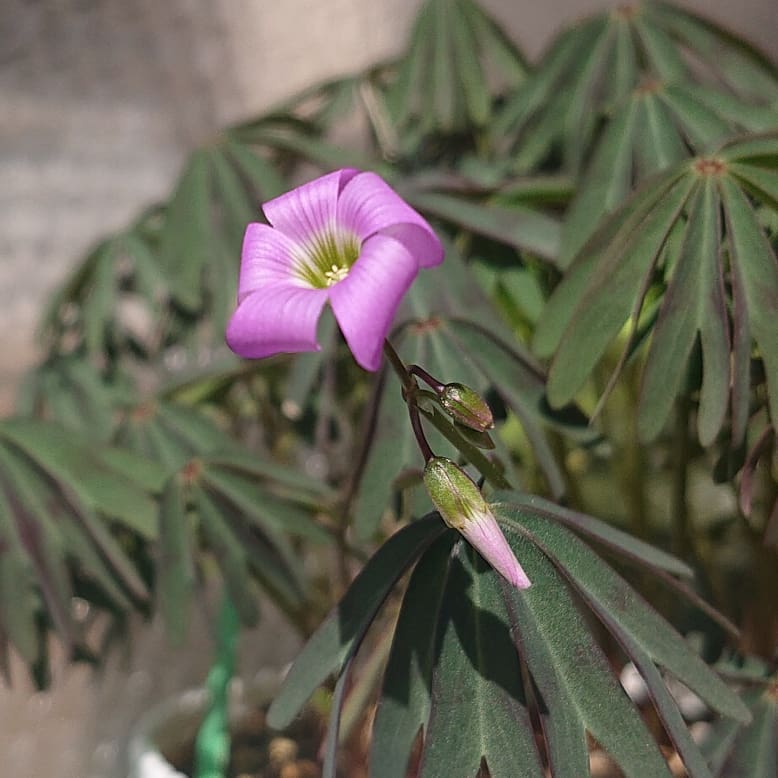
This species has large, showy pink flowers and deeply lobed leaves. It’s a striking addition to any garden.
Oxalis incarnata
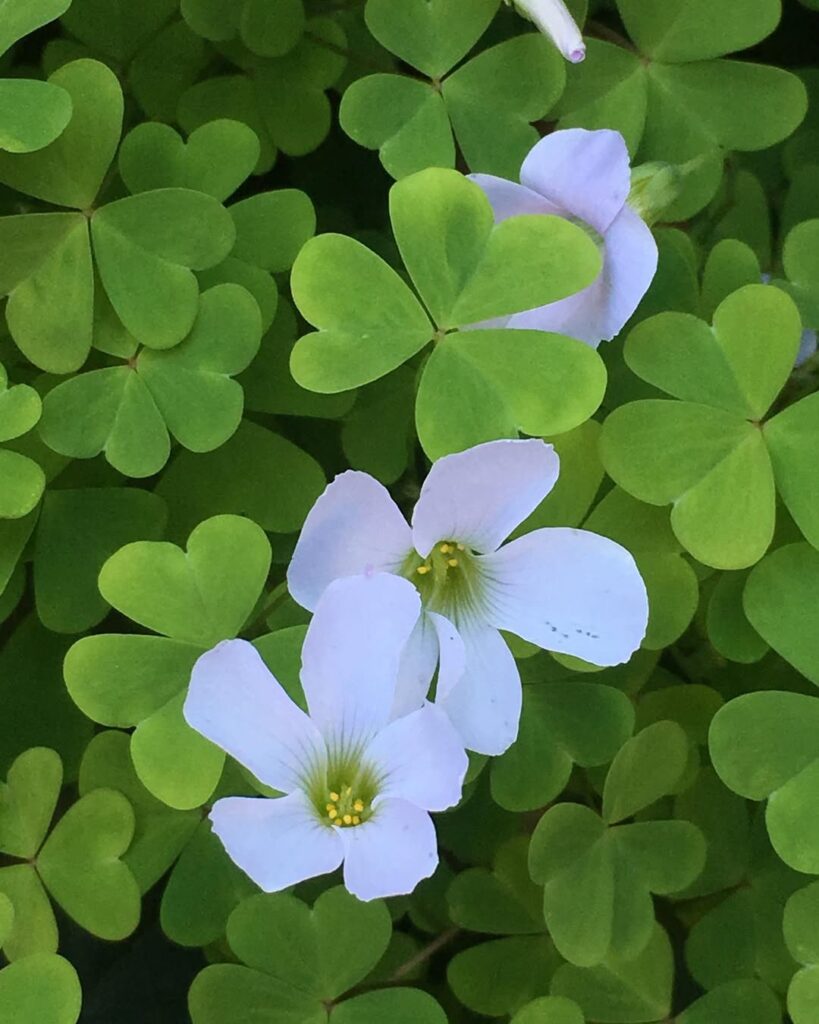
A rare variety with soft pink flowers and green foliage. It’s a slow grower but worth the wait.
Oxalis articulata
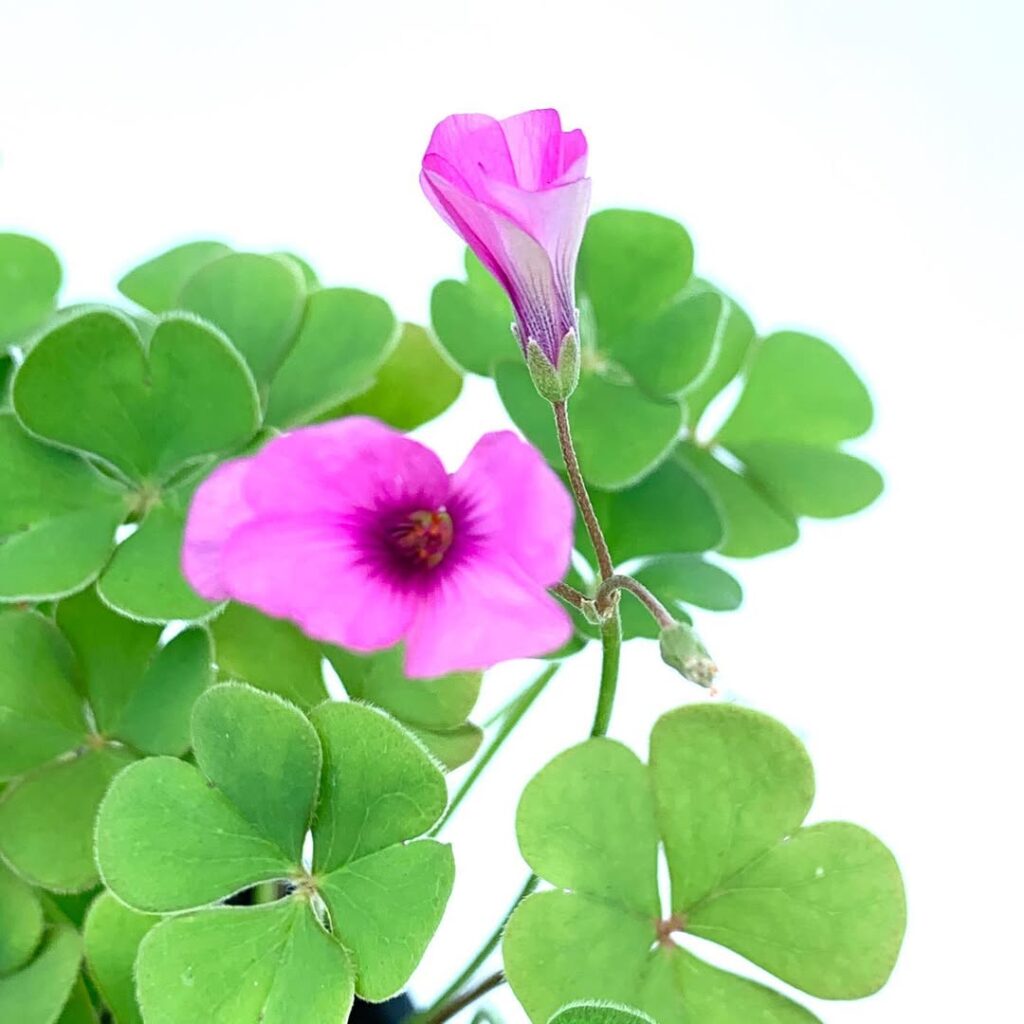
A hardy species with bright pink flowers and green leaves. It’s easy to grow and thrives in various conditions.
Oxalis rubra
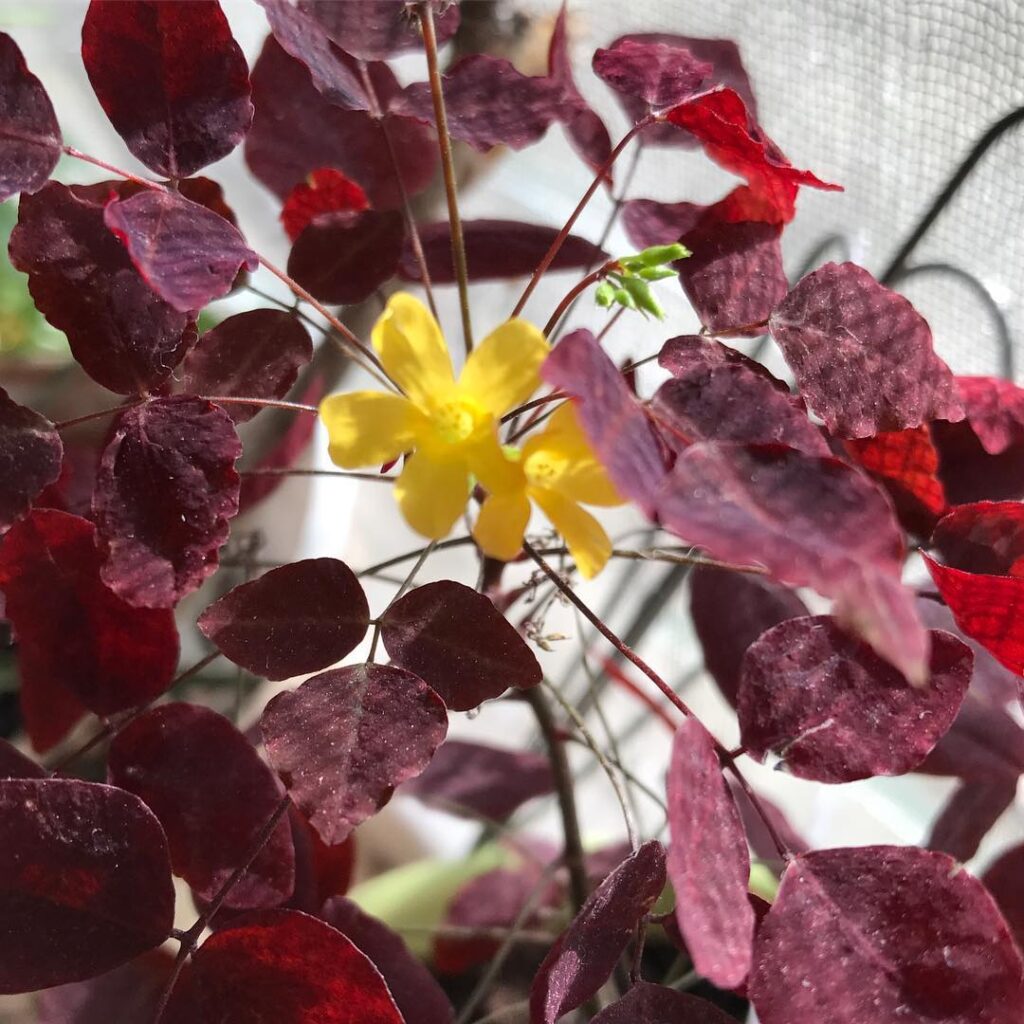
This variety has deep red flowers and green leaves. It’s a bold choice for adding color to a garden.
Oxalis flava
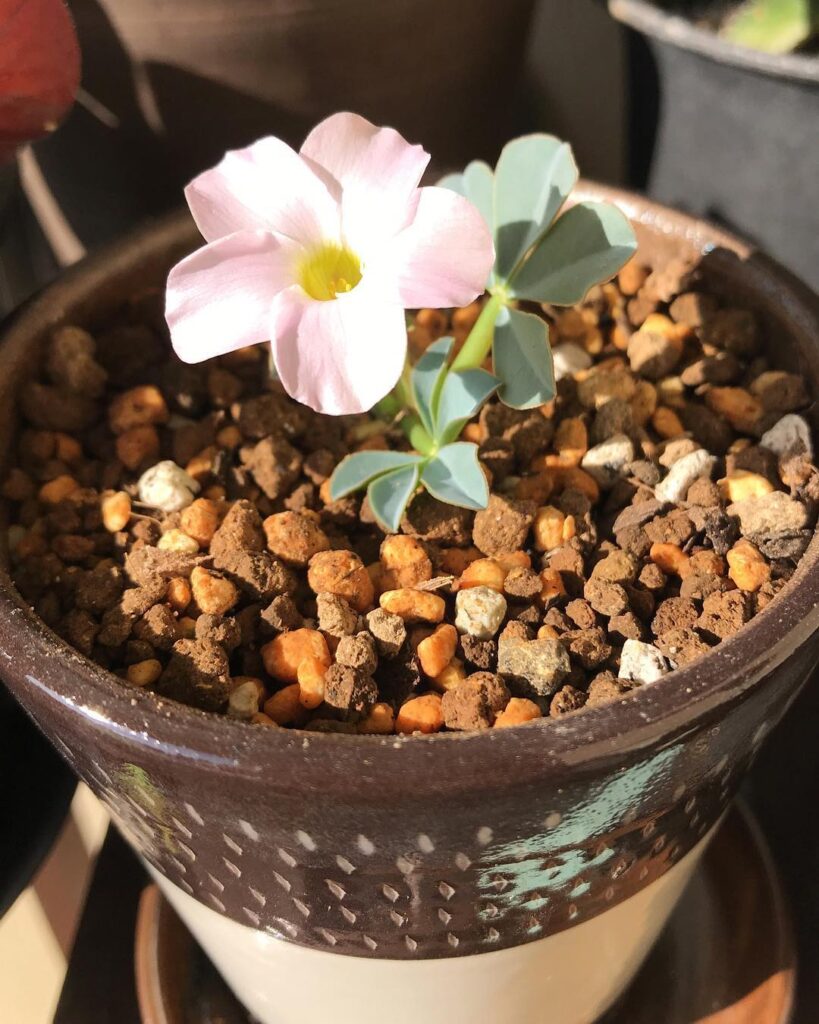
A yellow-flowering species with green leaves. It’s drought-resistant and thrives in sandy soil.
Oxalis hirta
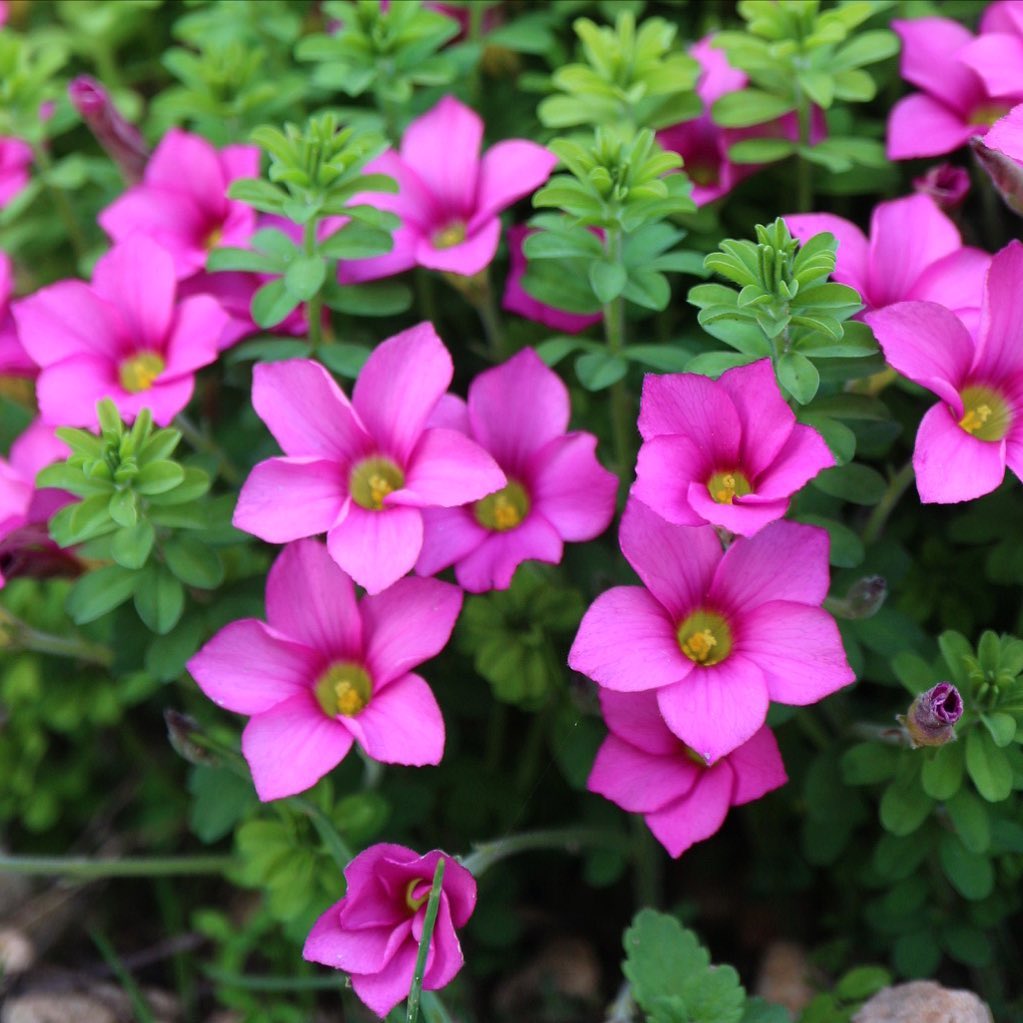
A winter-blooming variety with pink flowers and hairy leaves. It’s well-suited for rock gardens.
Oxalis purpurea

This species has rich purple flowers and green leaves. It’s a low-maintenance plant that thrives in full sun.
Oxalis melanosticta
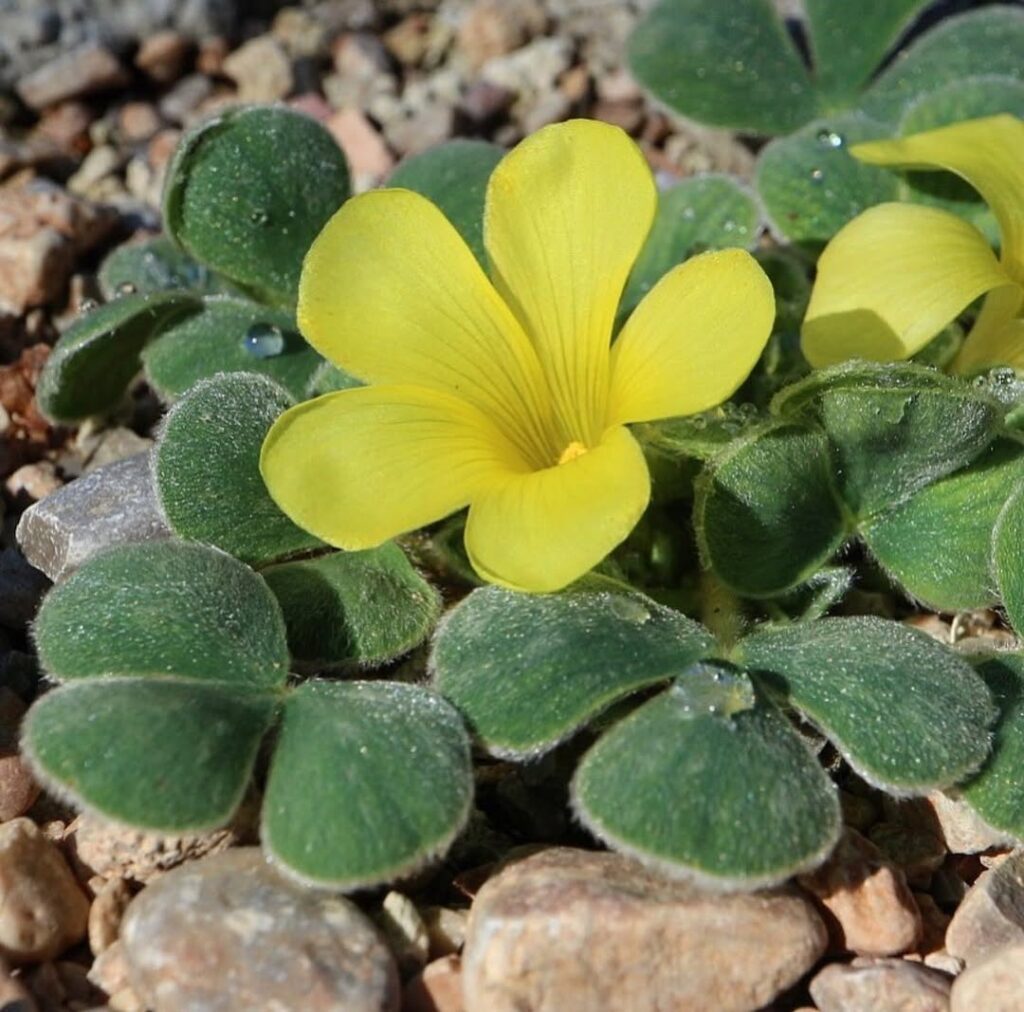
A unique variety with dark-spotted leaves and yellow flowers. It’s a rare find for collectors.
Oxalis bowiei
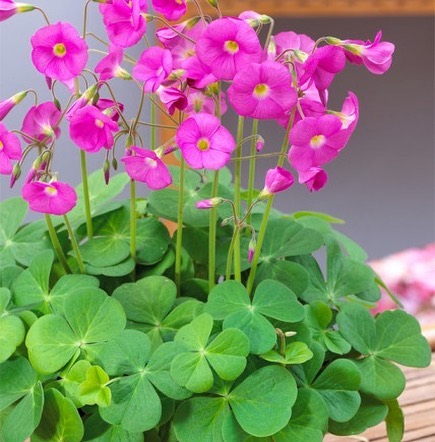
A large-flowered species with bright pink blooms. It’s a great choice for adding height to a garden.
Oxalis convexula
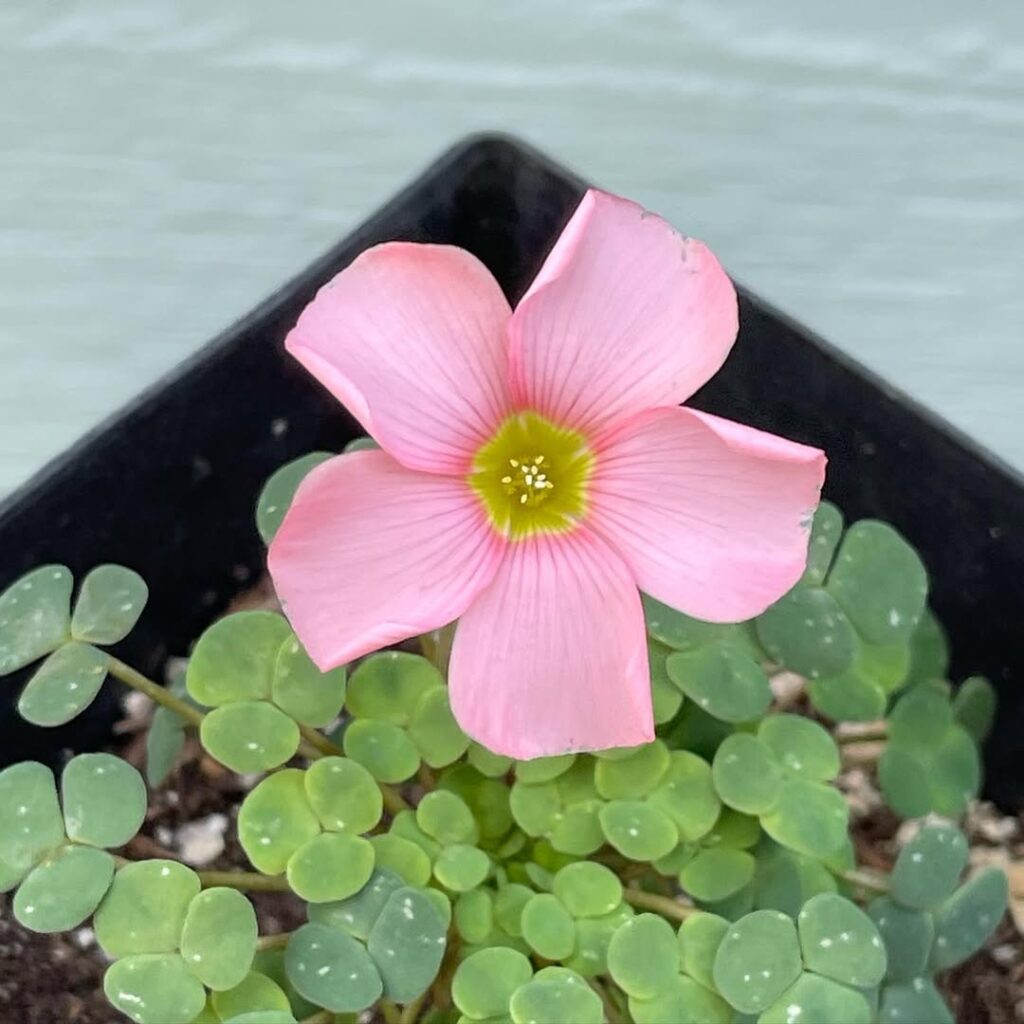
A compact variety with pink flowers and rounded leaves. It’s perfect for small spaces.
Oxalis palmifrons
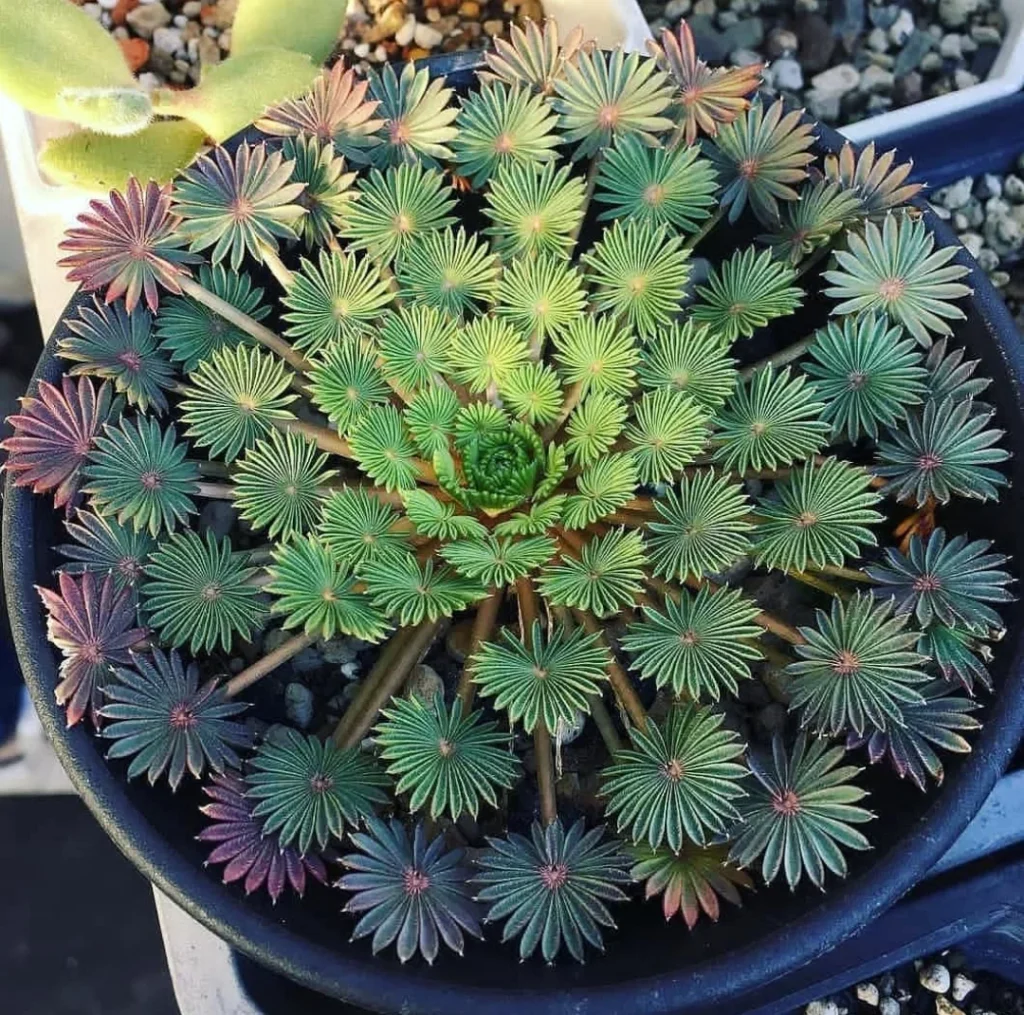
This variety has palm-like leaves and small pink flowers. It’s a striking plant for containers.
Oxalis adenophylla
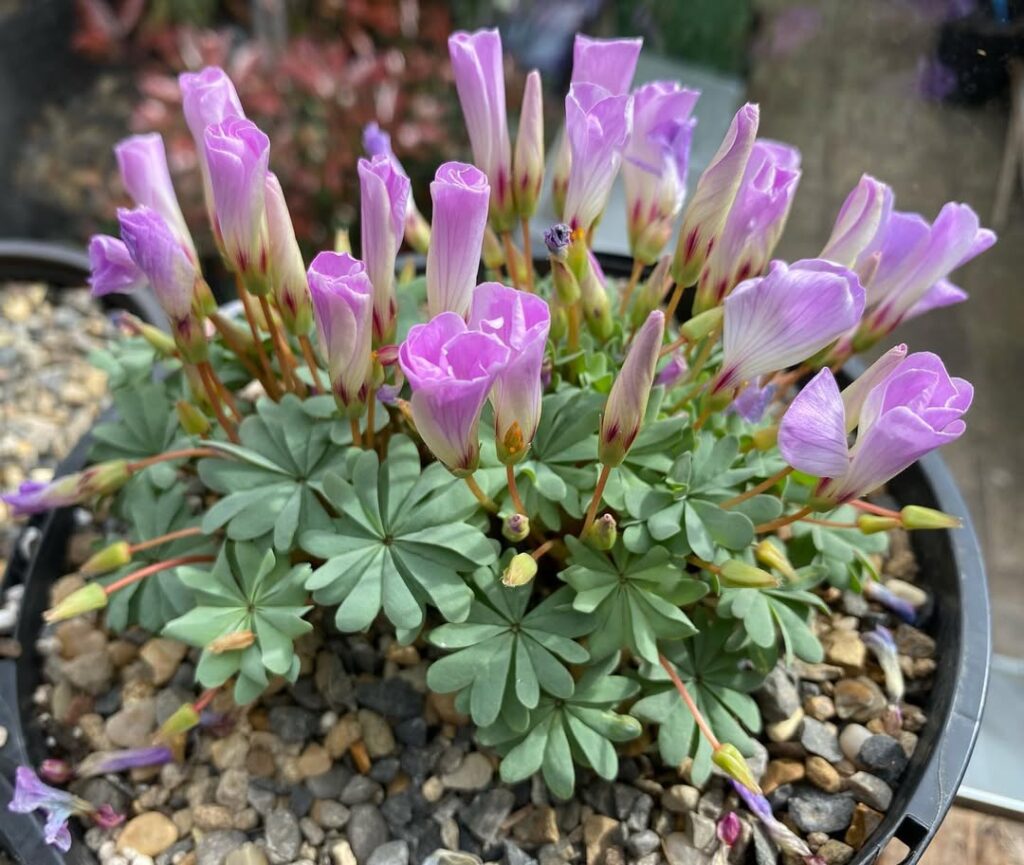
A silver-leaved species with pink flowers. It’s drought-tolerant and thrives in rocky soil.
Oxalis magnifica

A rare variety with large, showy flowers. It’s a collector’s favorite.
Oxalis perennans
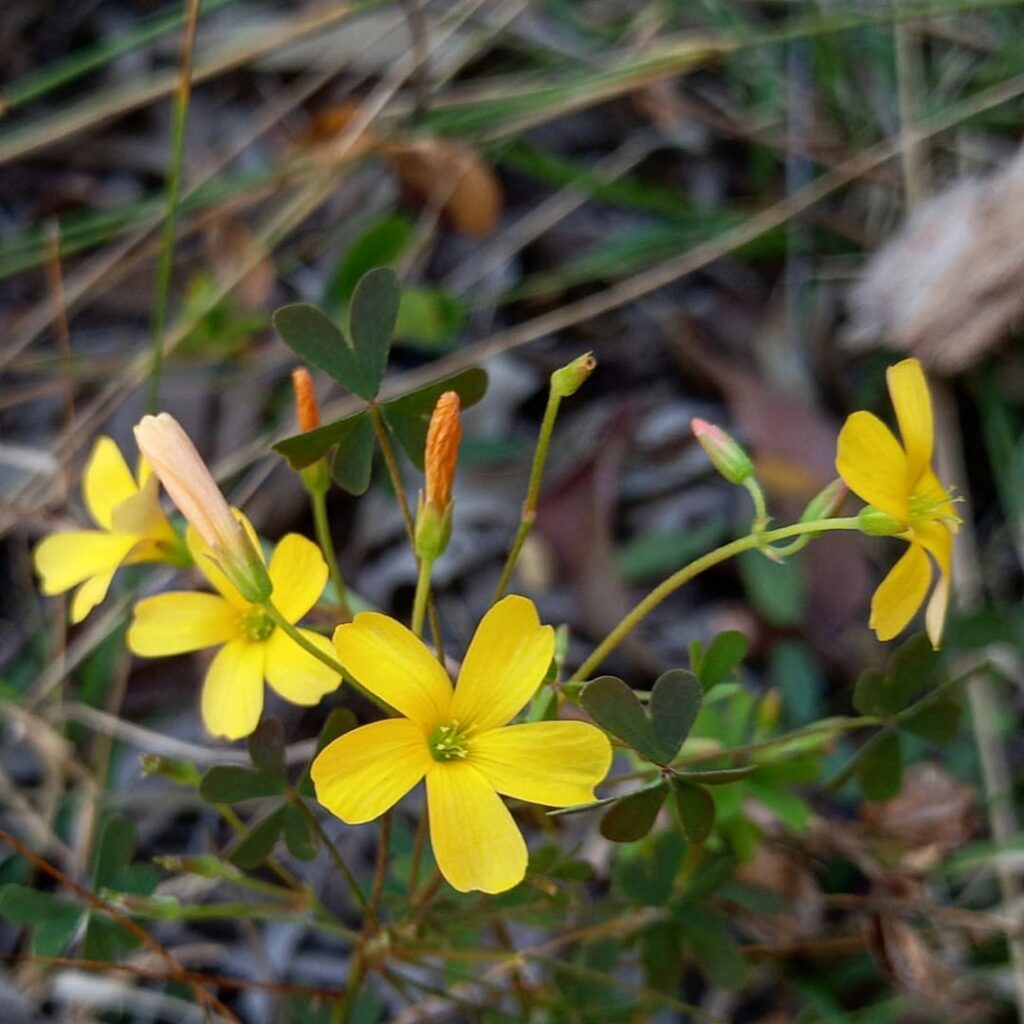
A perennial species with small yellow flowers. It’s a hardy plant that thrives in various conditions.
Oxalis trilliifolia
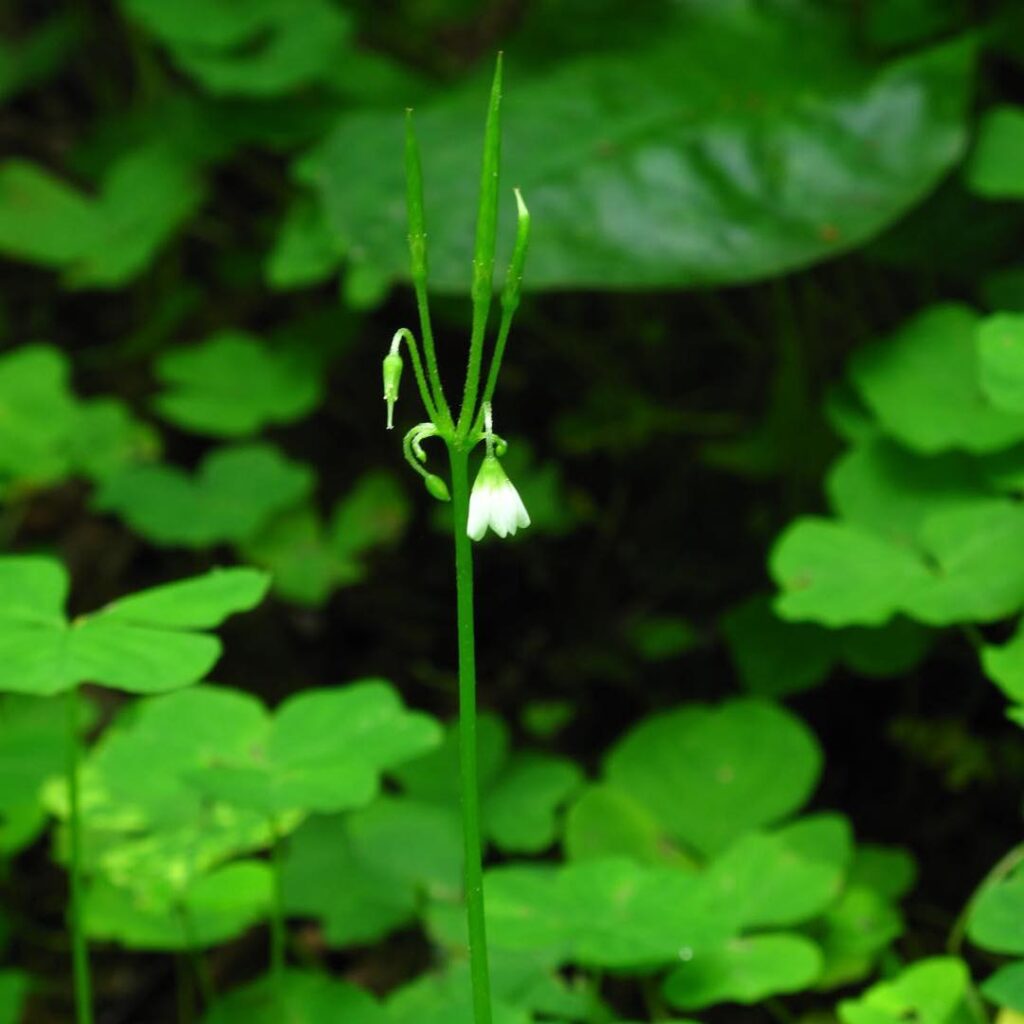
A clover-like variety with white flowers. It’s a charming addition to shaded gardens.
Oxalis valdiviensis
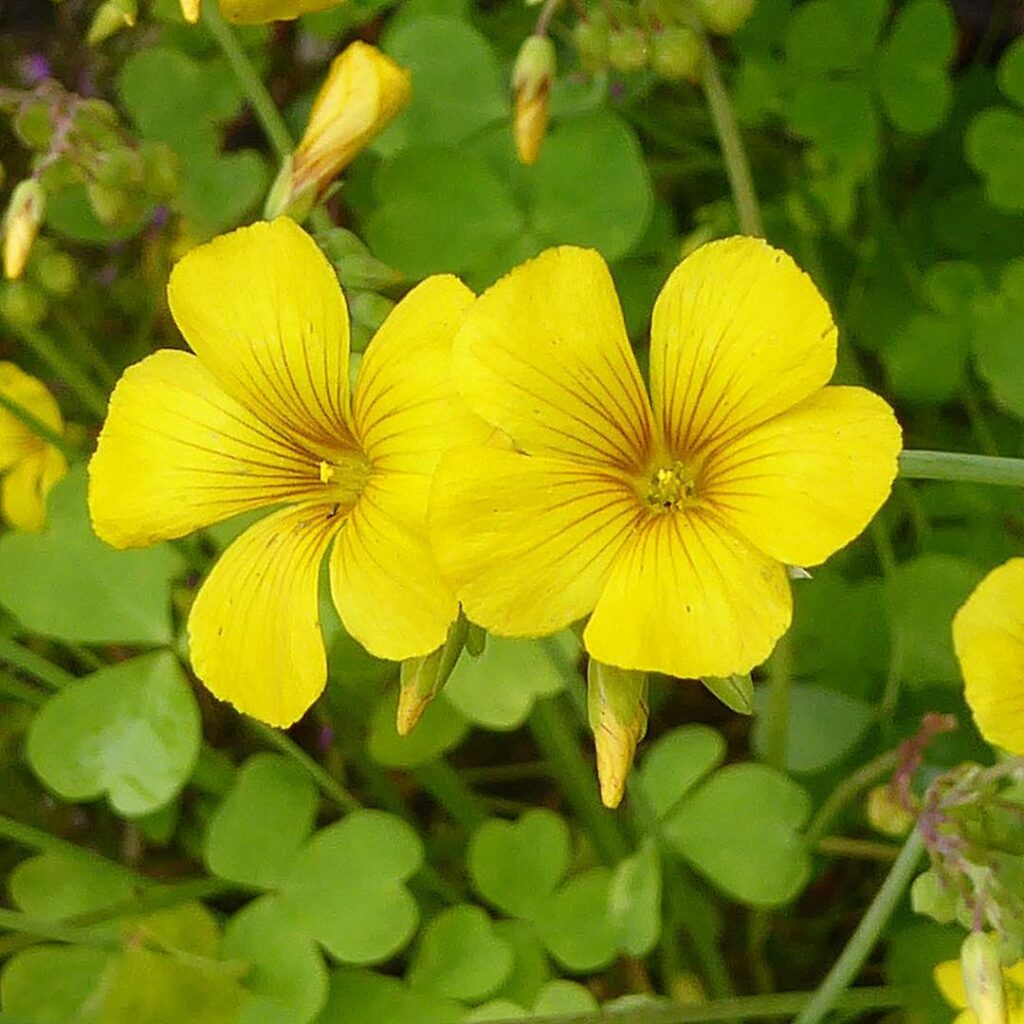
A South American species with yellow flowers and green leaves. It’s a unique find for plant enthusiasts.
Oxalis virginea
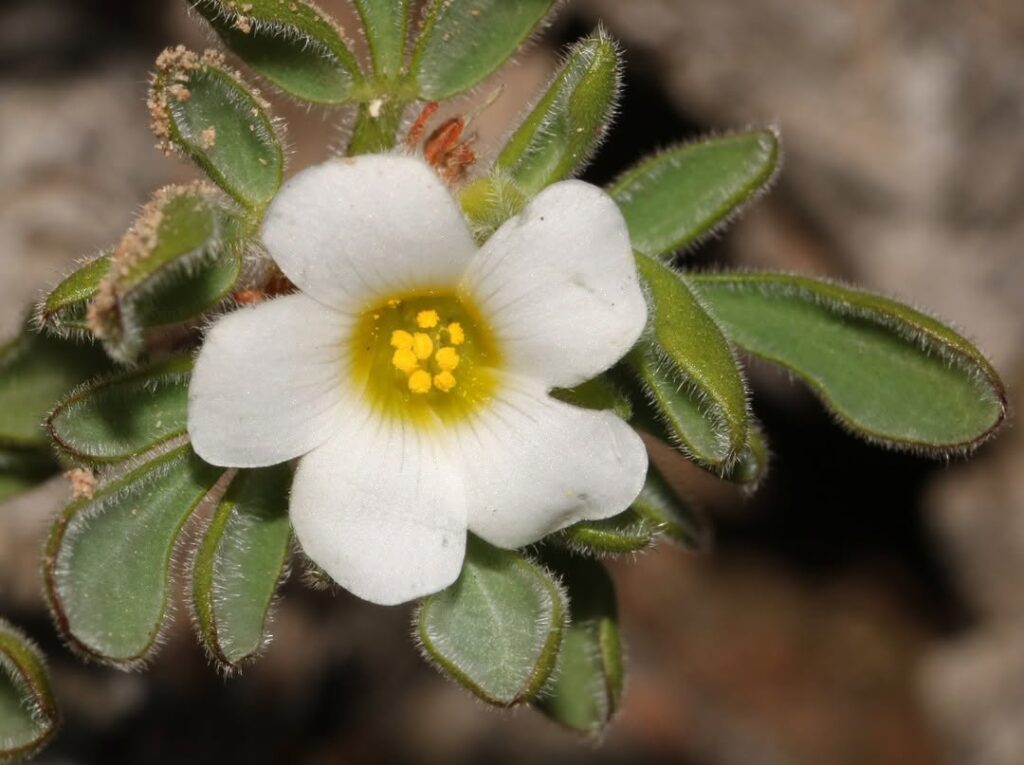
A delicate variety with white flowers and green leaves. It’s well-suited for woodland gardens.
Oxalis inaequalis

A species with long, slender leaves and tiny pink flowers. It’s a subtle but beautiful plant.
Oxalis luteola
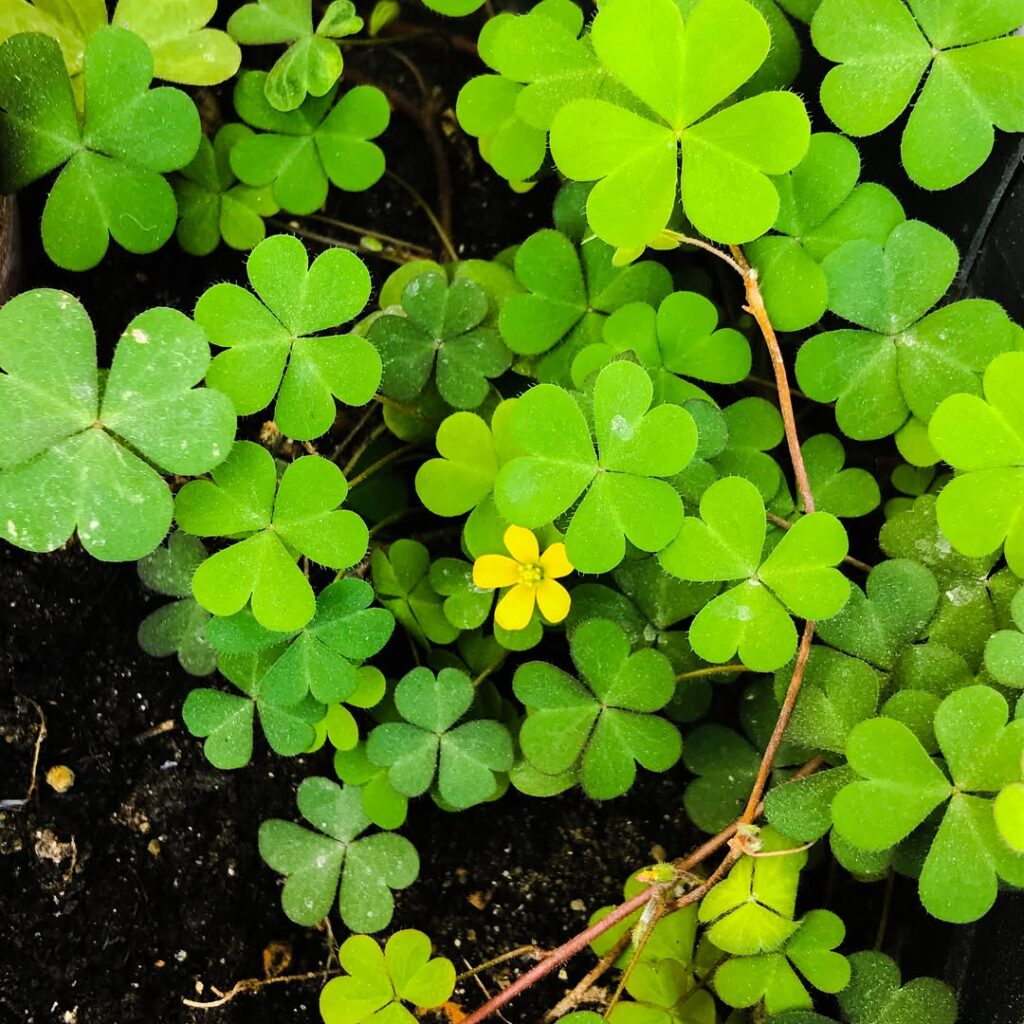
A bright yellow-flowering species with green leaves. It’s a cheerful addition to gardens.
Oxalis luteola ‘Maculata’
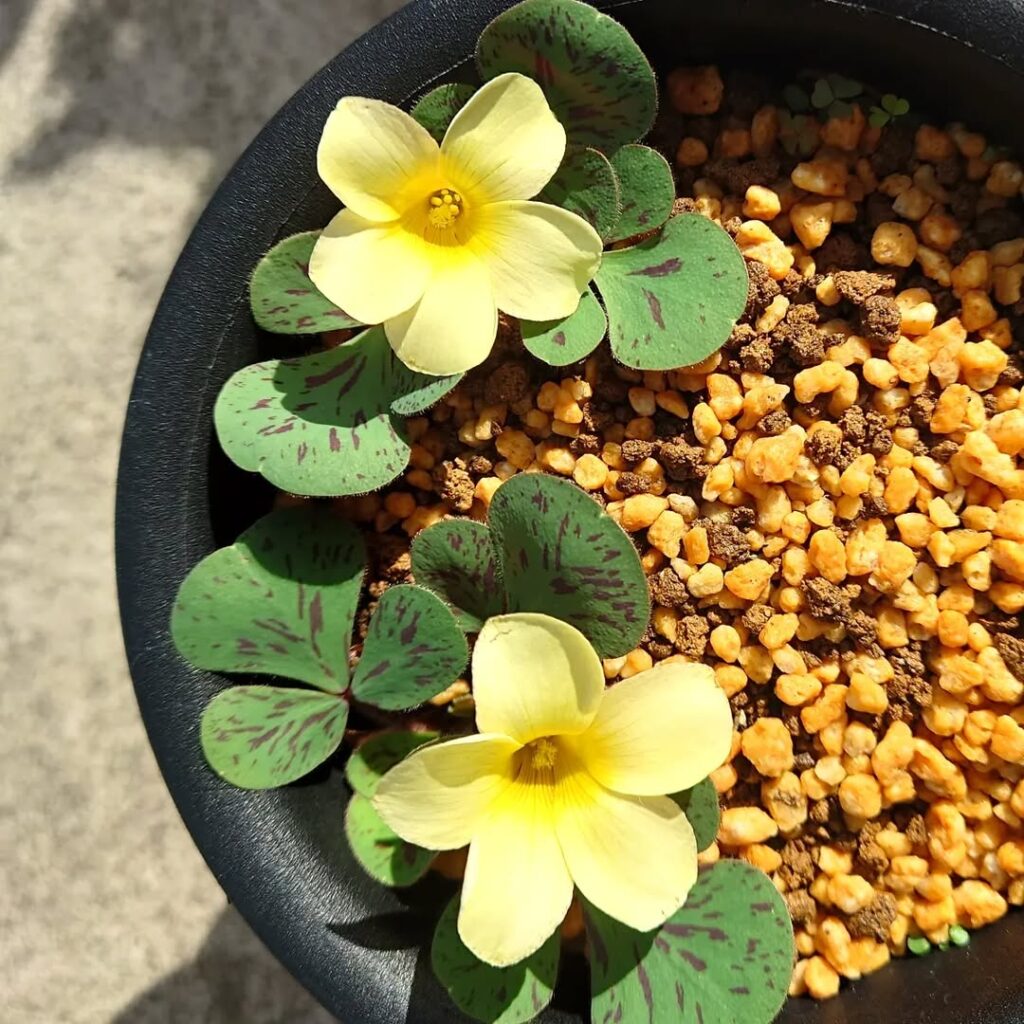
This variety features bright yellow flowers and green leaves with distinct purple markings underneath, creating a striking contrast. It thrives in sandy soils and is well-suited for rock gardens or dry landscapes.
Oxalis luteola ‘Glauca’
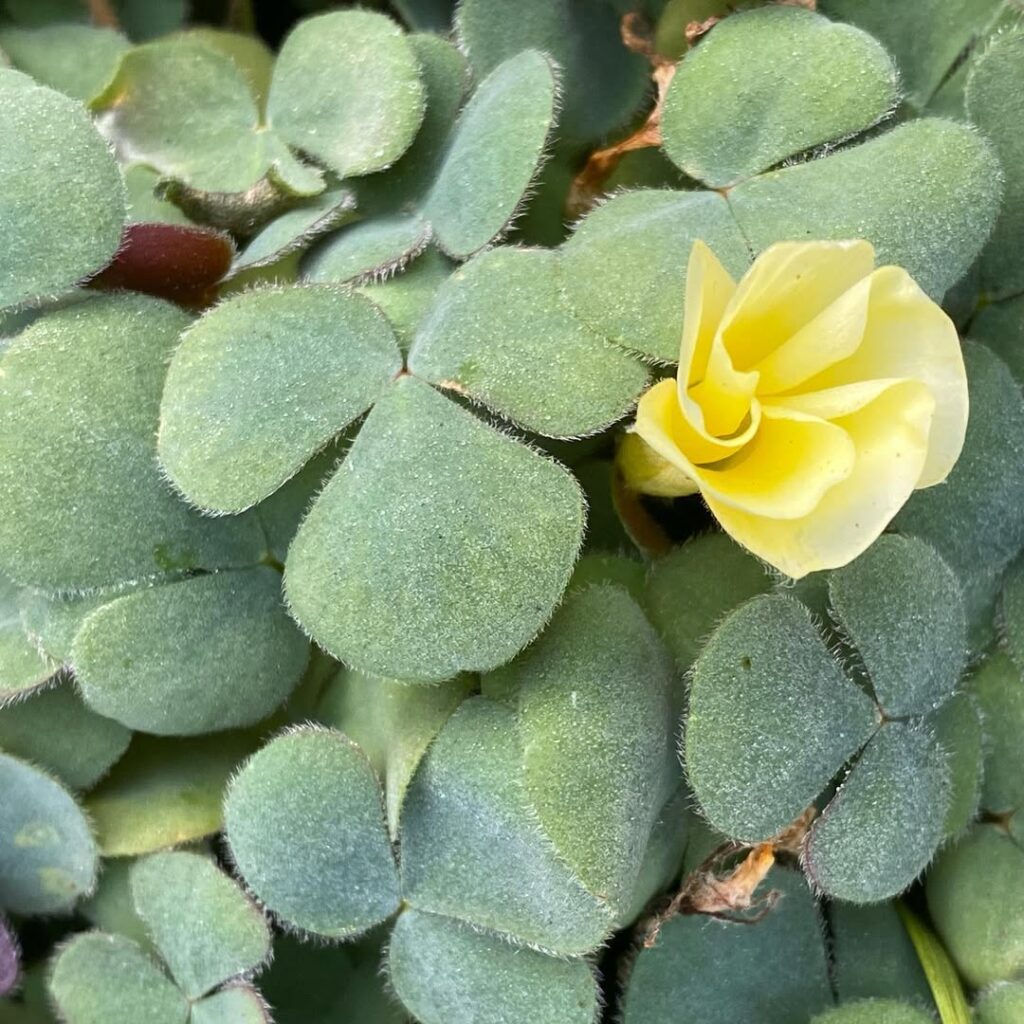
Oxalis obtusa
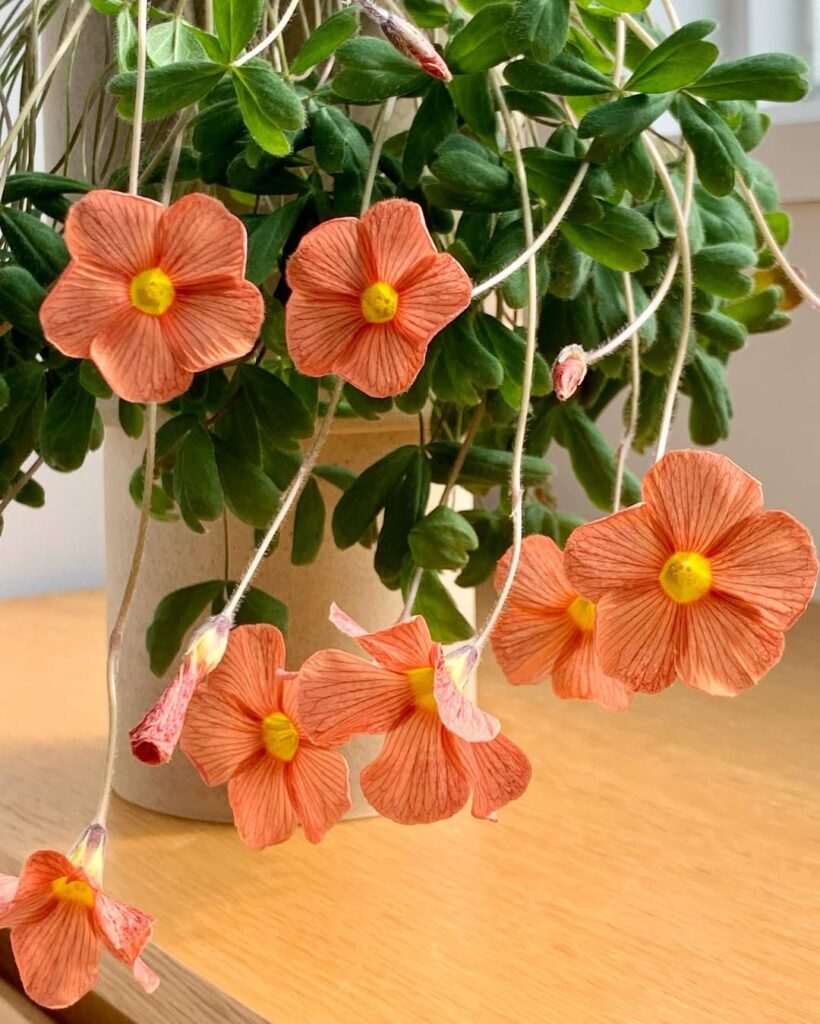
A winter-blooming species with orange or yellow flowers. It’s a great choice for seasonal color.
Oxalis obtusa ‘Blush’
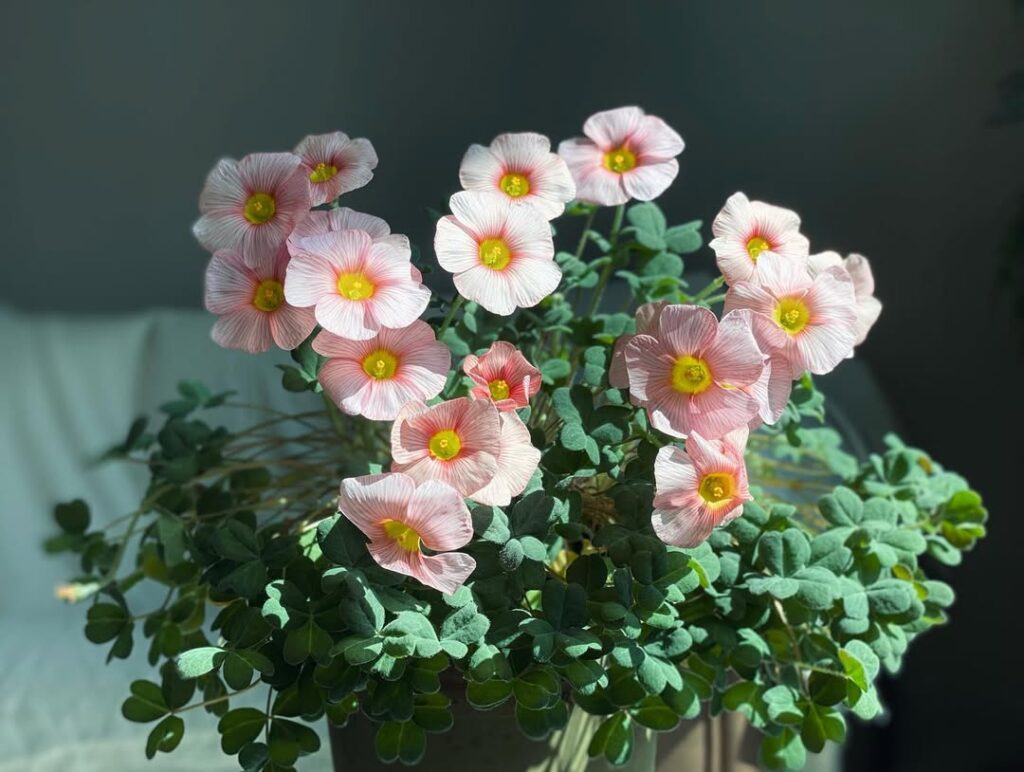
This charming variety of Oxalis obtusa features soft pink flowers with a delicate gradient, transitioning from a deeper blush at the center to a lighter shade at the edges. Its compact growth habit and vibrant blooms make it a standout in gardens, especially during cooler seasons.
Oxalis obtusa ‘Ceres Salmon’
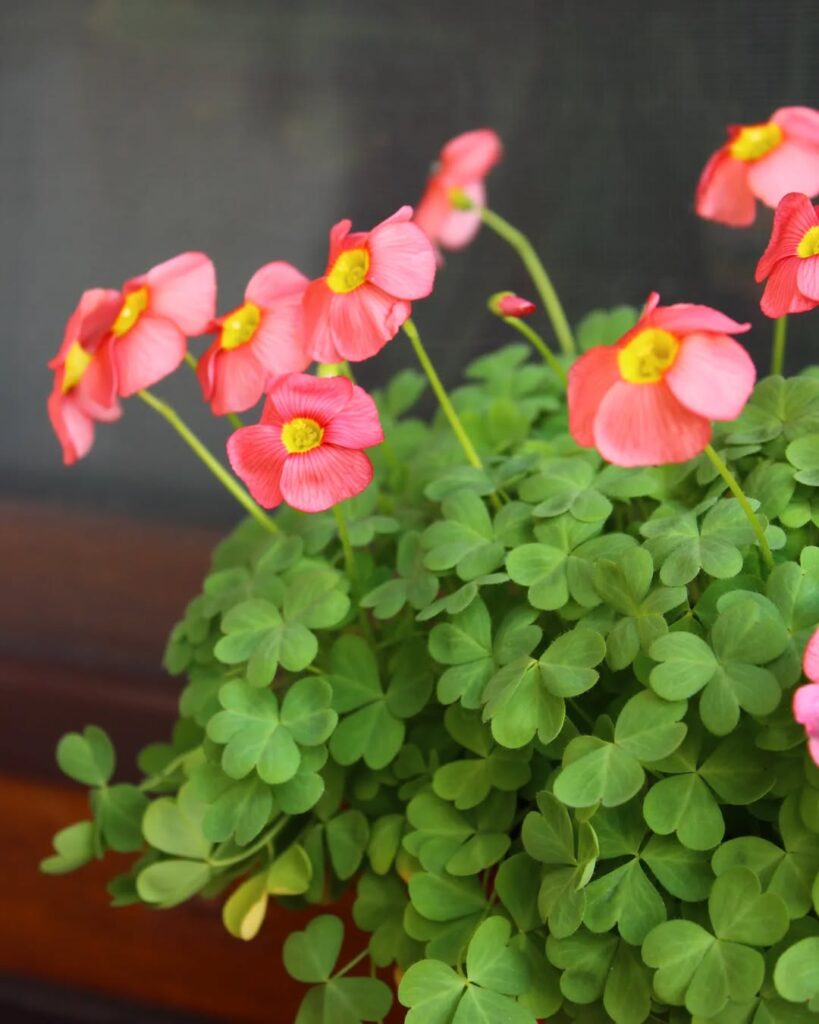
This variety of Oxalis obtusa features stunning salmon-colored flowers that brighten up gardens, especially in cooler seasons. Its blooms have a soft, warm hue that contrasts beautifully with its green foliage, making it a standout among oxalis cultivars.
Oxalis obtusa ‘Lilac’

This delicate variety of Oxalis obtusa features soft lilac-colored flowers that add a gentle charm to gardens. Its blooms contrast beautifully with its green foliage, making it a subtle yet elegant addition to any plant collection.
Oxalis albicans
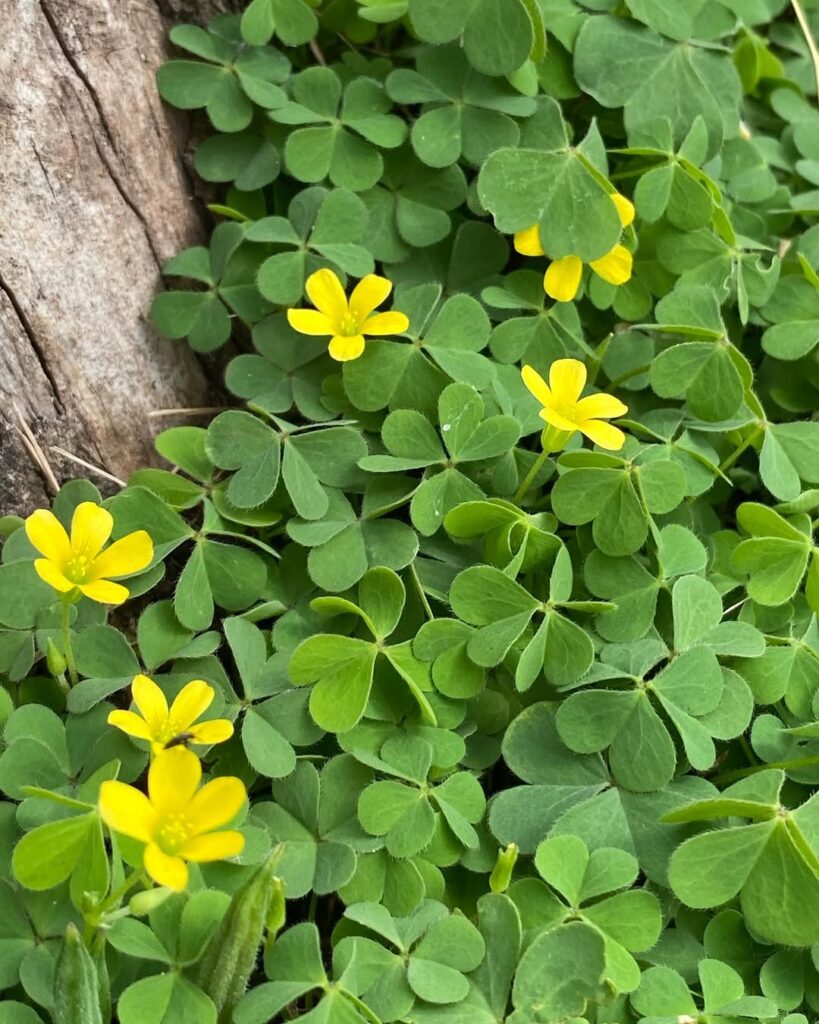
Also known as Radishroot Woodsorrel, this North American species is native to Mexico and the southwestern United States. It features glaucous, gray-green to yellowish-green leaves that are distinctly hairy, with three leaflets. The bright lemon-yellow flowers bloom in summer, creating a cheerful display.
Oxalis ambigua
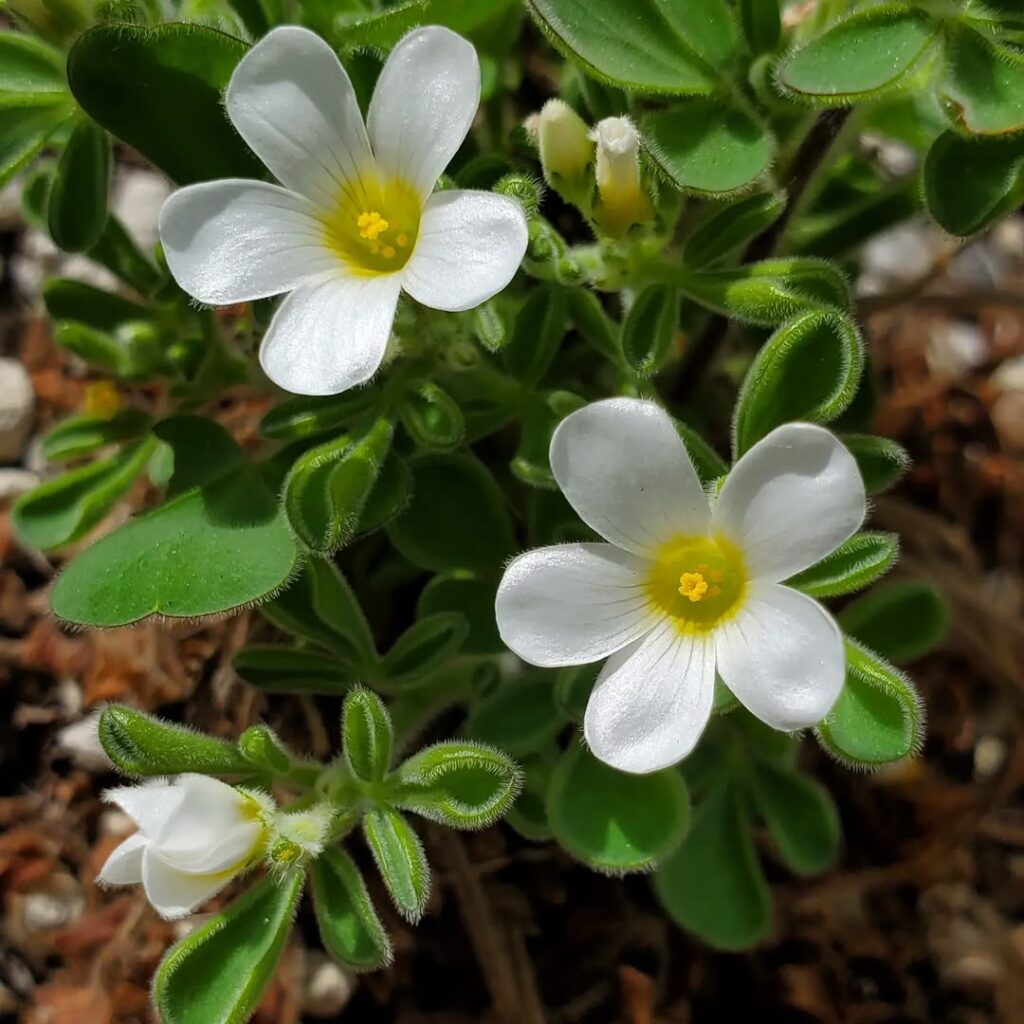
This South African species is a winter bloomer, producing delicate white, yellow, or cream-colored flowers with a wide yellow tube. Its three hairy leaflets are often dotted underneath, and the plant thrives in rocky hills and sandy soils.
Oxalis barrelieri
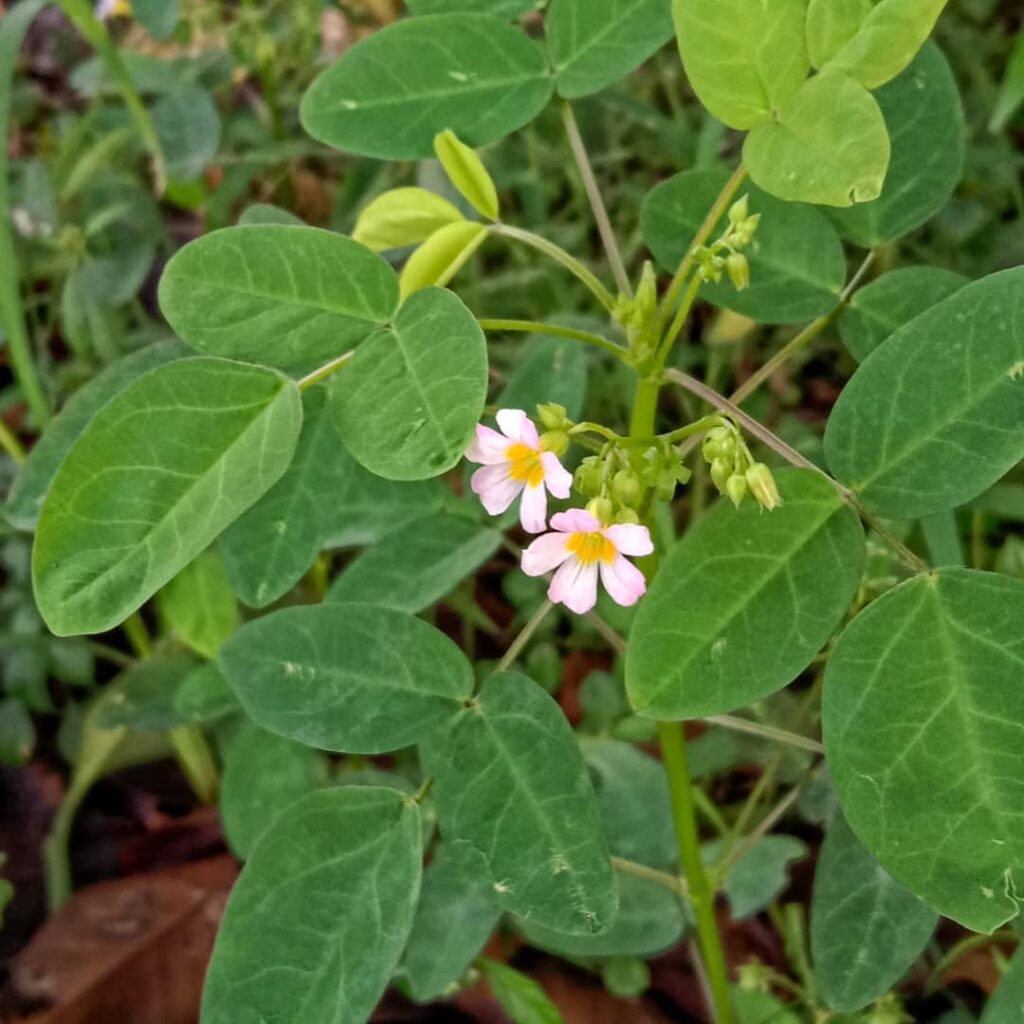
Also known as Barrelier’s Woodsorrel or Lavender Sorrel, this species features pink flowers with a greenish or yellow base and trifoliate leaves. It grows between 20–150 cm tall and is native to the West Indies, Central, and South America, though it has been introduced to parts of Africa, Sri Lanka, and Southeast Asia.
Oxalis brasiliensis
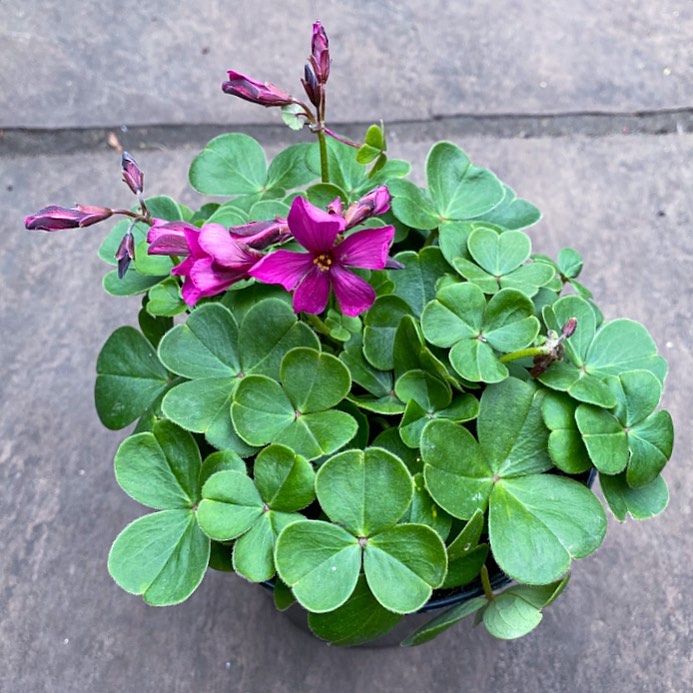
Also known as Brazilian Woodsorrel, this species belongs to the Ionoxalis section of the Oxalis genus. It is a herbaceous perennial with a long, simple root system and small stems. The flowers can be either bright yellow or brilliant crimson-purple, making it a visually striking addition to gardens.
Oxalis caprina
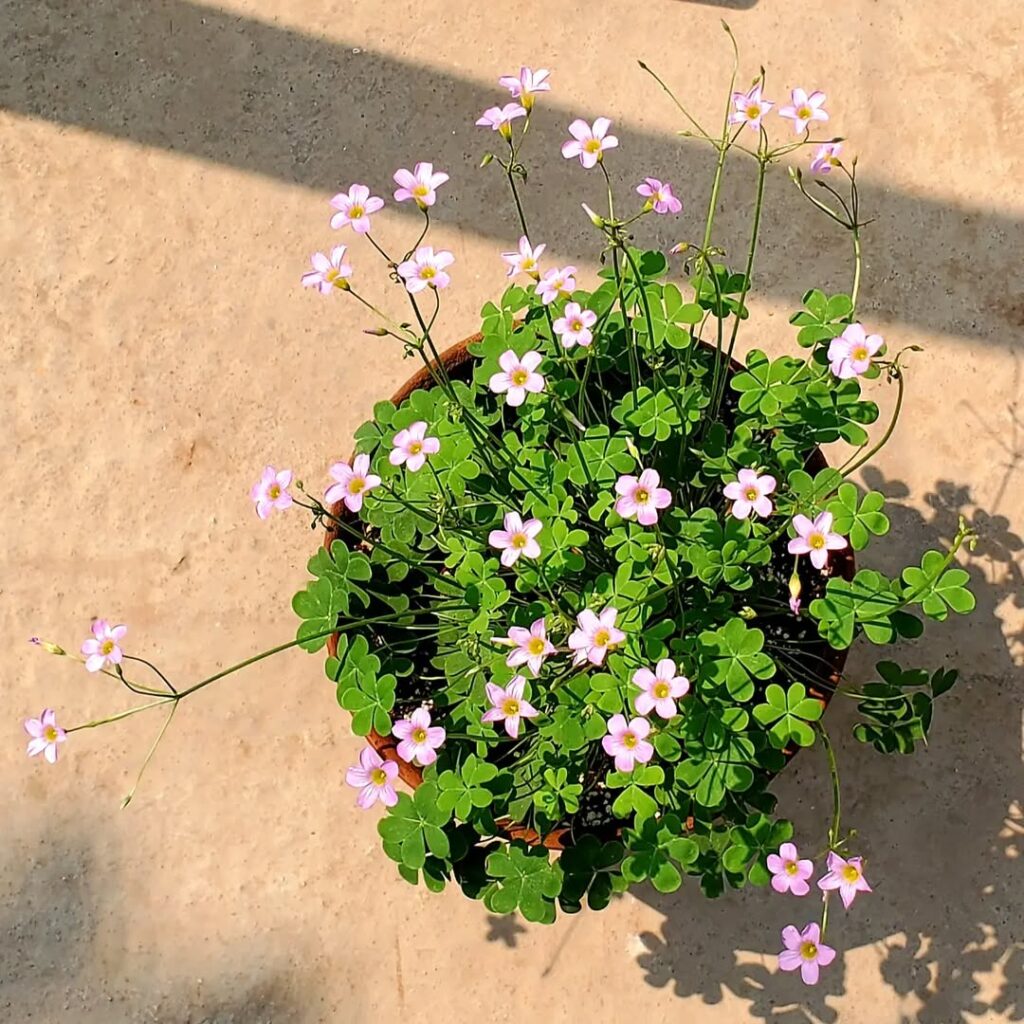
Also known as Caprine Woodsorrel, this South African species is a small, creeping perennial that thrives in dry, sandy habitats. It produces bright yellow, five-petaled flowers and has hairy, trifoliate leaves. Oxalis caprina is often used as an ornamental plant and can also be brewed into herbal teas.
Oxalis debilis
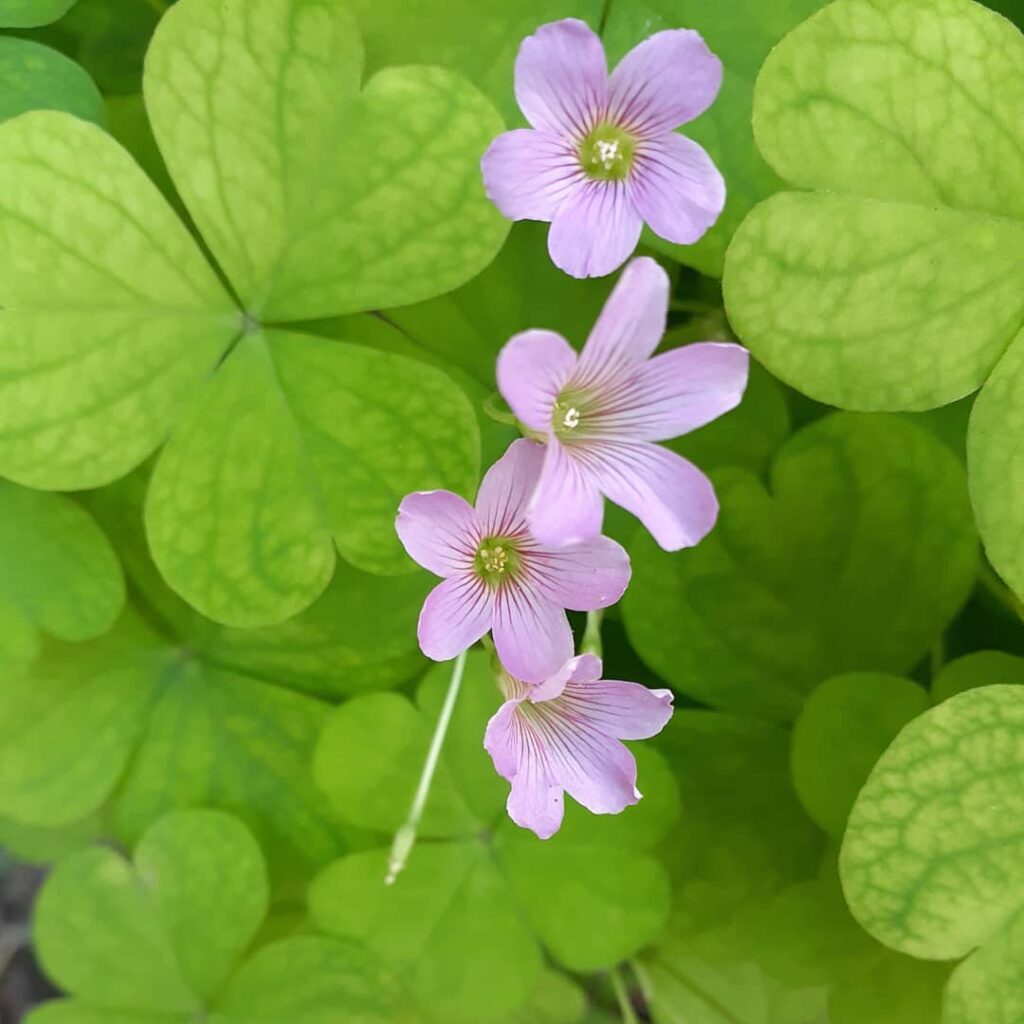
Also known as Pink Wood Sorrel, this perennial species is native to South America but has spread globally, thriving in both temperate and tropical regions. It features delicate pink to lilac flowers and clover-like green leaves, often forming dense ground cover. The plant reproduces through bulbs and can be invasive in some areas. Its leaves, flowers, and roots are edible, offering a tangy, lemon-like flavor, though they contain oxalic acid, which should be consumed in moderation.
Oxalis decaphylla
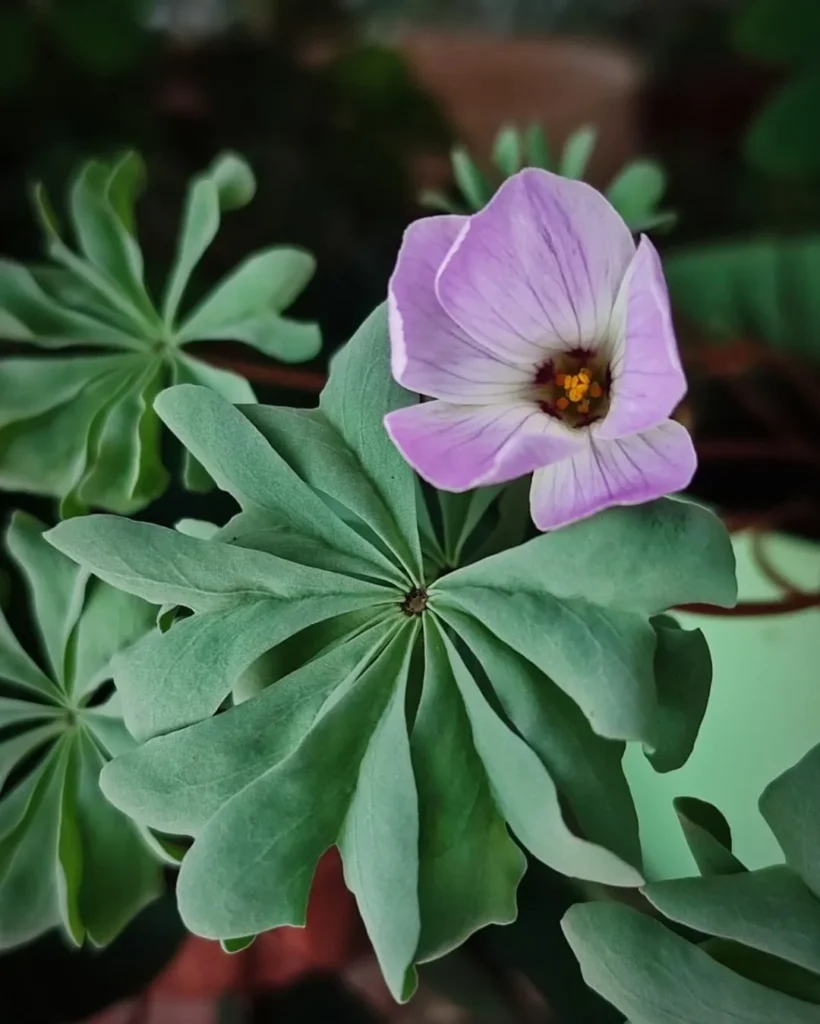
Also known as Ten-leaf Woodsorrel, this perennial species is native to Arizona, New Mexico, and Mexico. It thrives in damp habitats within otherwise dry regions and can grow up to 45 cm (18 in) tall. The plant features green to purplish leaves, sometimes with a transverse purple band, and produces rose-purple, lavender, or pink flowers with green veins.
Oxalis dehradunensis
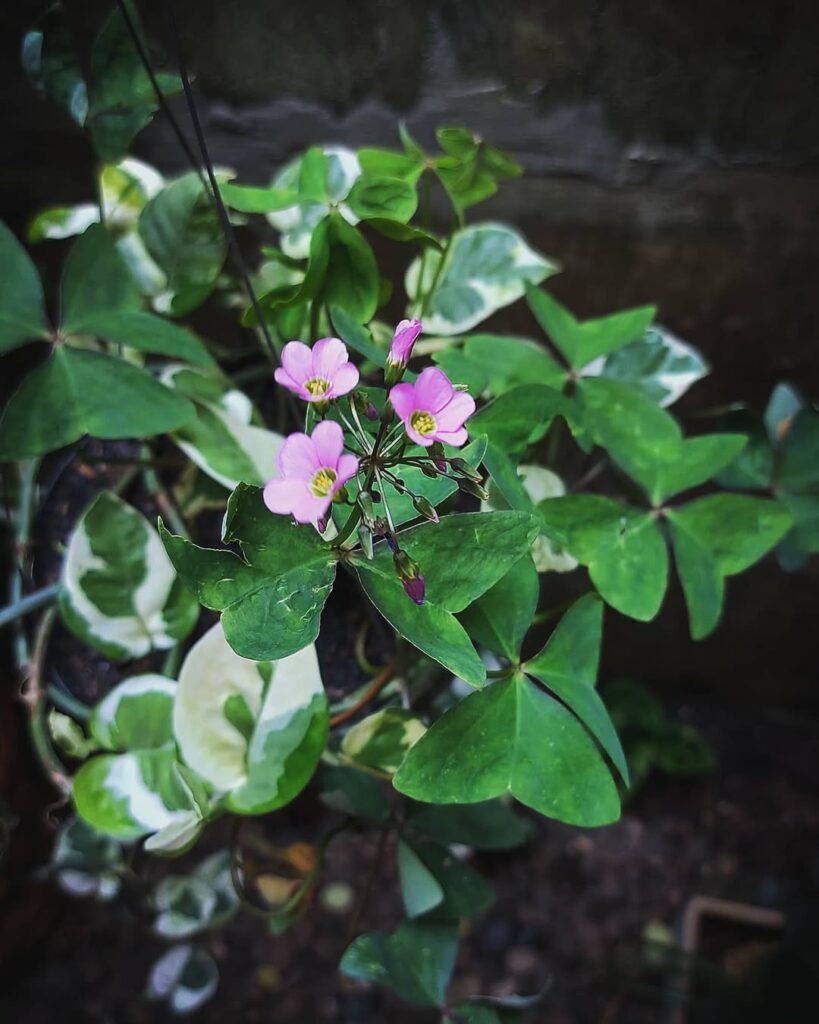
Also known as Dehradun Woodsorrel, this species is native to the Caribbean and Gulf Coast region but has also been introduced to India. It features purple-violet flowers with a greenish base and tristylous floral structures, meaning it has three different flower forms to promote cross-pollination. The leaves are smaller than those of Oxalis latifolia, with a more truncated apex.
Oxalis depressa
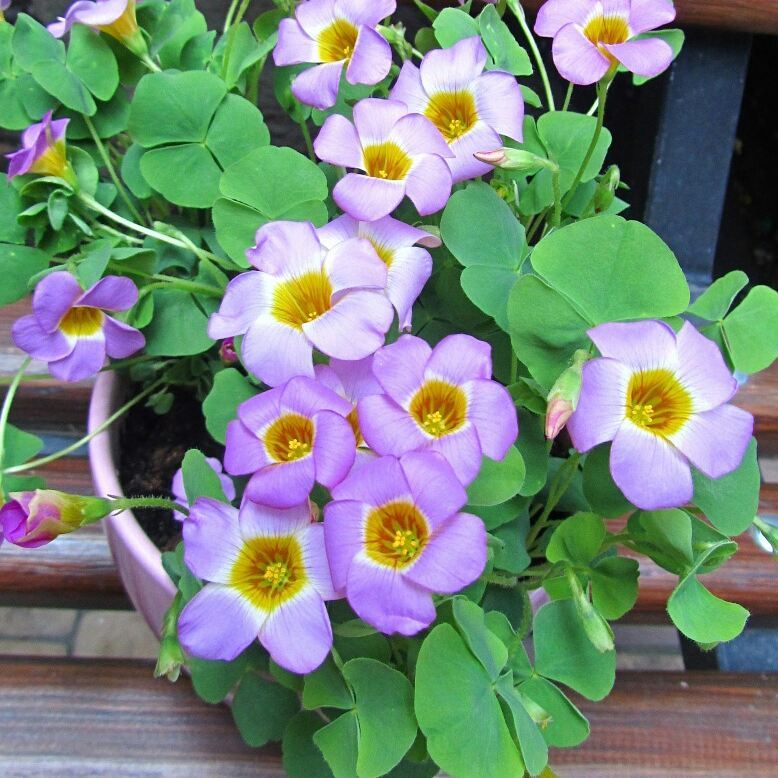
This South African species is a small tuberous perennial with silvery-green, clove-like leaves. It produces bright rose-pink flowers with yellow centers, blooming from summer to fall. Easy to cultivate, it spreads gently in gardens and makes a great choice for containers or ground cover.
Oxalis dillenii
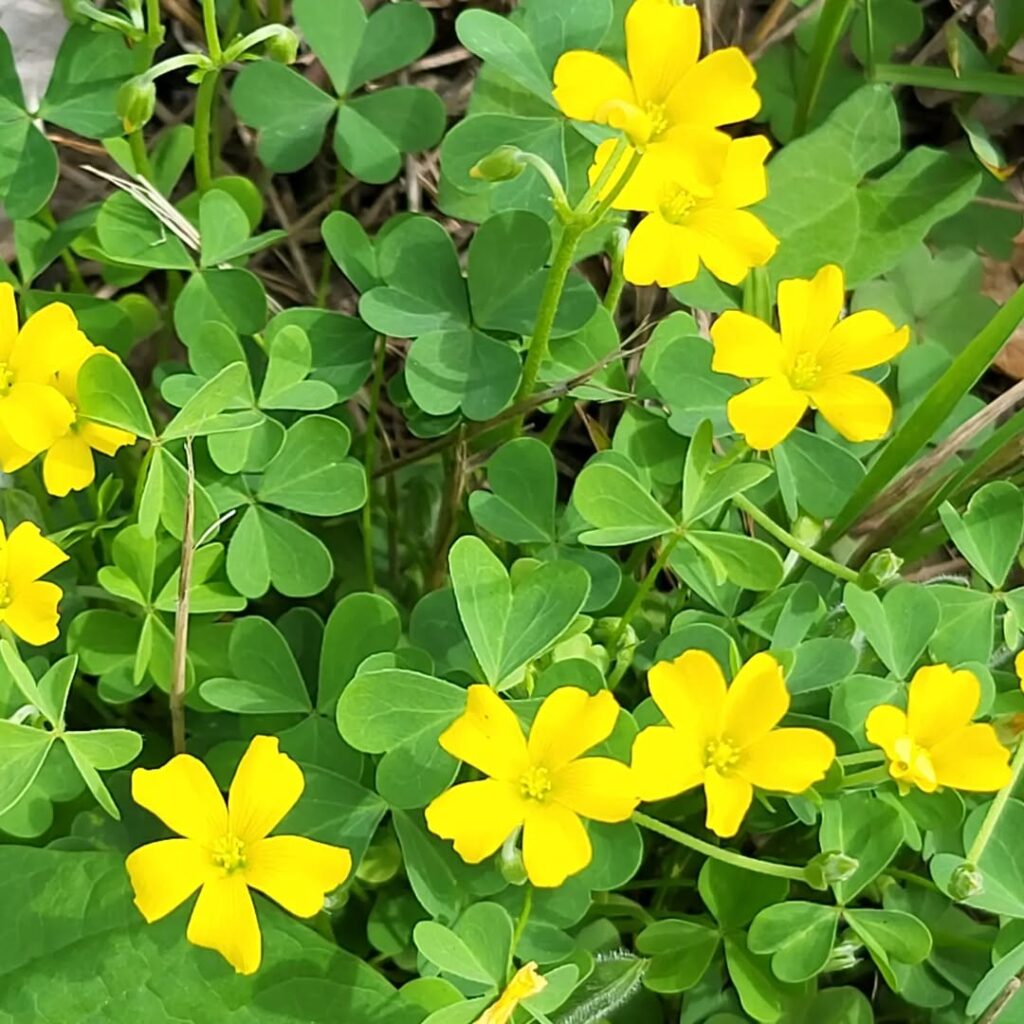
Also known as Southern Wood Sorrel or Slender Yellow Woodsorrel, this species features clover-like green leaves with three leaflets and bright yellow flowers. The blooms have five petals, typically 4–10 mm long, and the plant produces brown seed capsules measuring 1.5–2.5 cm. Native to North America, it has spread worldwide and is often considered a weed due to its ability to thrive in disturbed habitats.
Oxalis drummondii
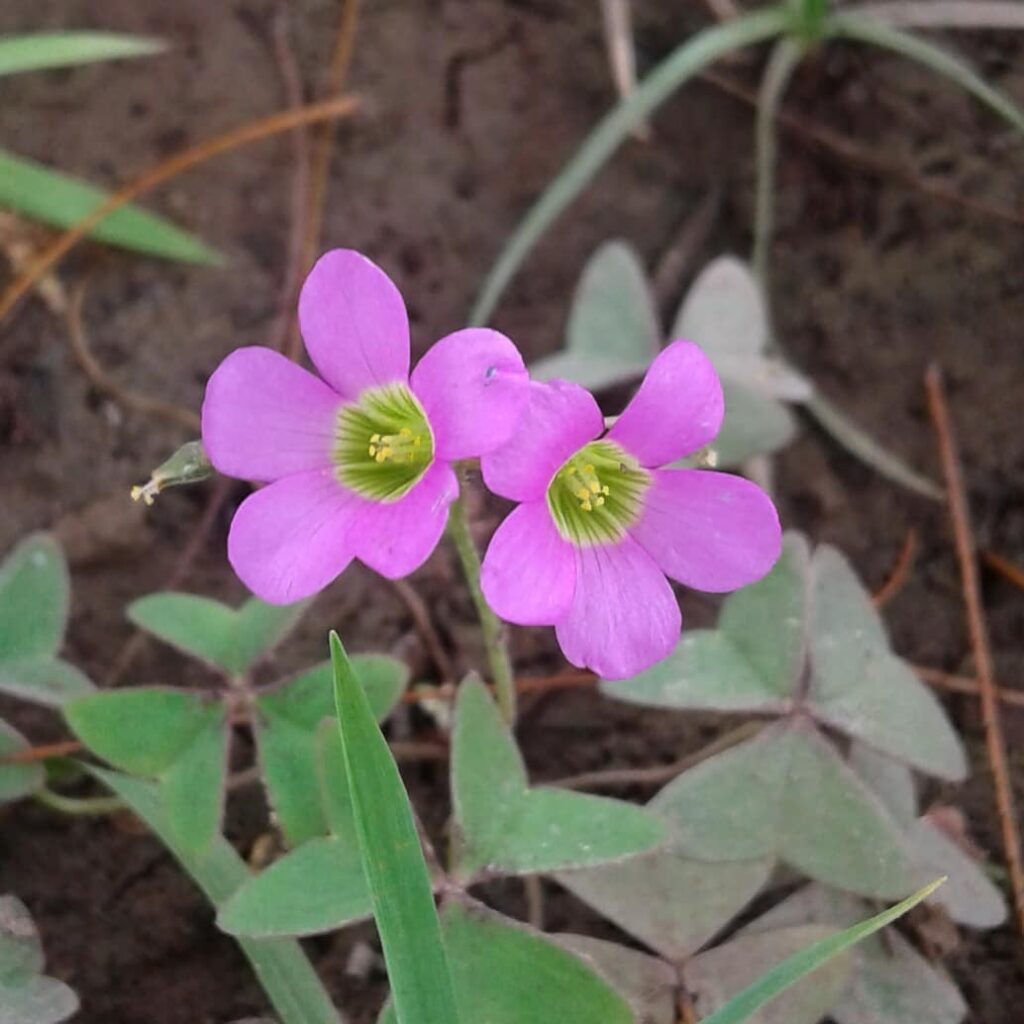
Also known as Drummond’s Woodsorrel or Large-leaf Woodsorrel, this species is native to central and southern Texas and northern Mexico. It is a tuberous geophyte that grows up to 20 cm (8 in) tall, thriving in calcareous or sandy soils in open woods, shrublands, and grasslands. The plant features bright pink flowers with white-to-yellow centers and three V-shaped leaflets, each about 1 inch long.
Easy Care Guide for Oxalis Plants
Oxalis plants are surprisingly low-maintenance and can thrive with just a little attention!
🌱 Light – Bright, indirect light is best. Too much direct sun can scorch the leaves, while too little light can make them leggy.
💧 Watering – Keep the soil lightly moist but not soggy. Water when the top inch of soil feels dry. Reduce watering during dormancy, usually in winter.
🌿 Soil – Well-draining potting mix is ideal. A blend with peat, perlite, and regular garden soil works great.
🍽️ Feeding – Use a balanced liquid fertilizer every month during the growing season (spring and summer) to keep the plant healthy and vibrant.
💤 Dormancy – Most oxalis plants go dormant at some point, meaning the leaves die back temporarily. This is totally normal! Stop watering and let them rest for a few weeks before new growth appears.
✂️ Pruning – Trim off dead or yellowing leaves to encourage fresh growth. This keeps the plant looking tidy.
🏡 Indoor vs. Outdoor – Oxalis can thrive both indoors and outdoors, but keep them protected from extreme temperatures and frost.
